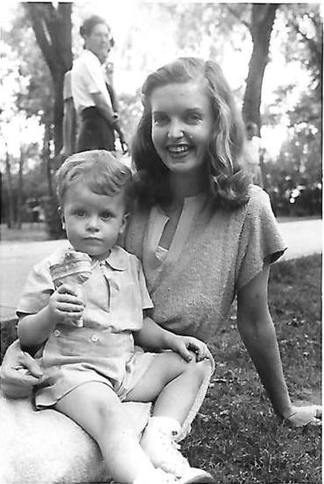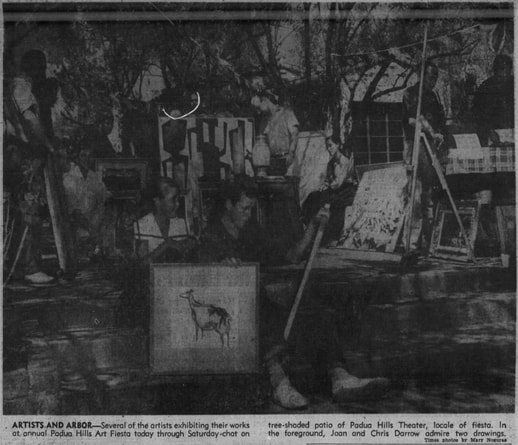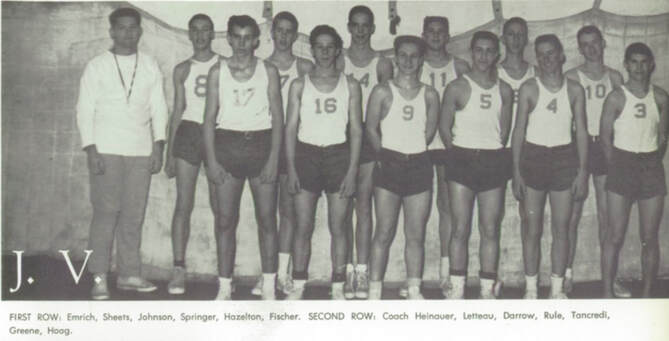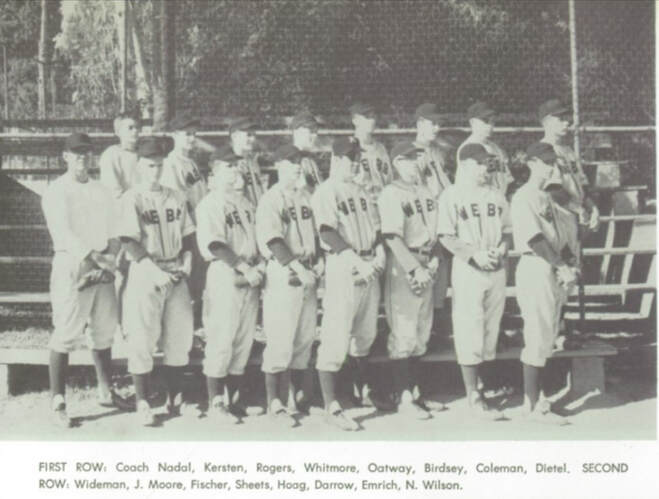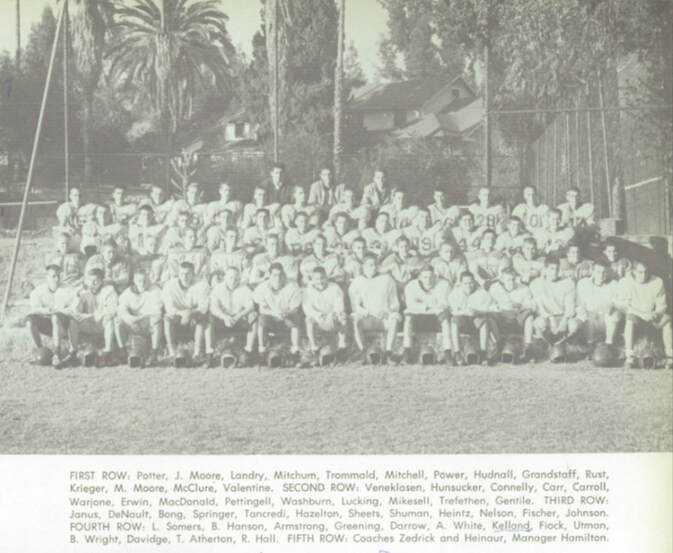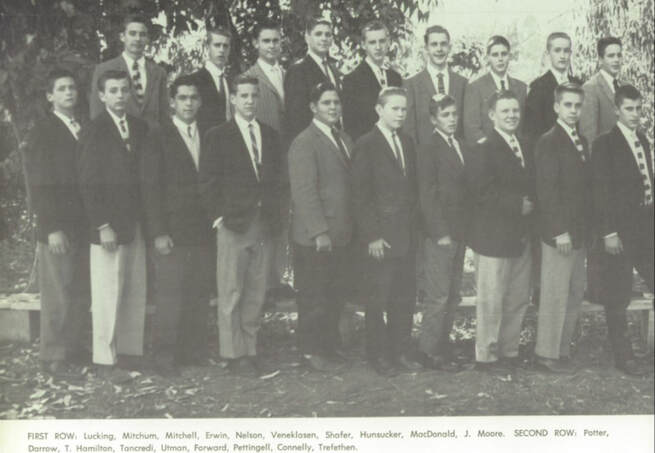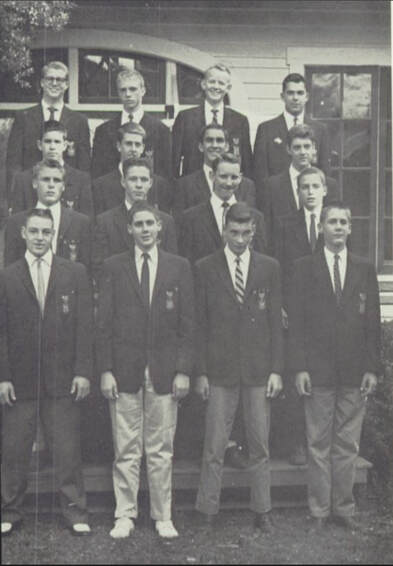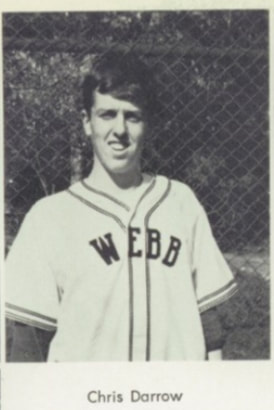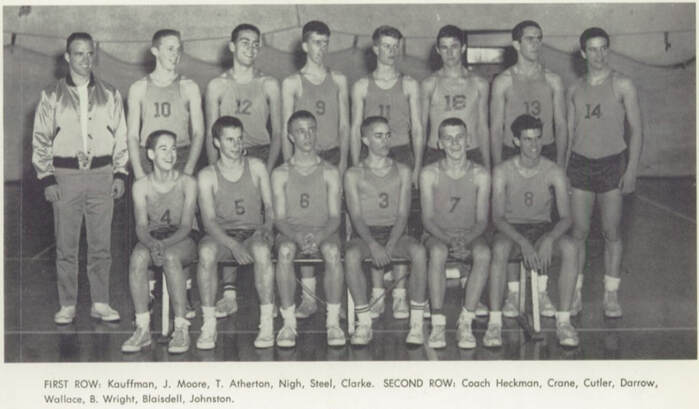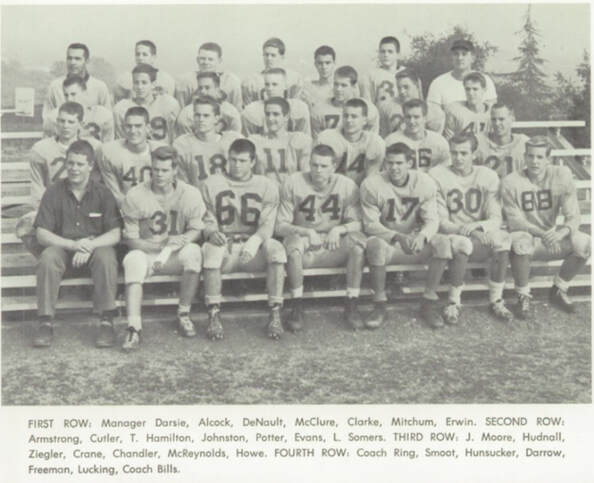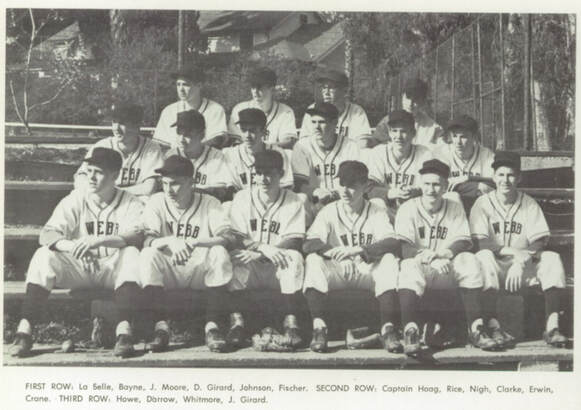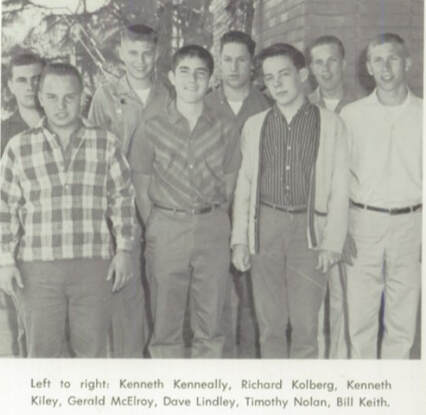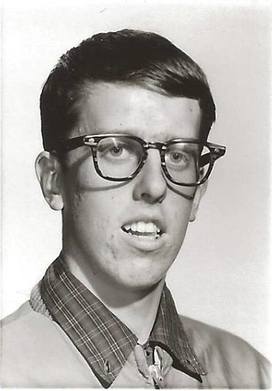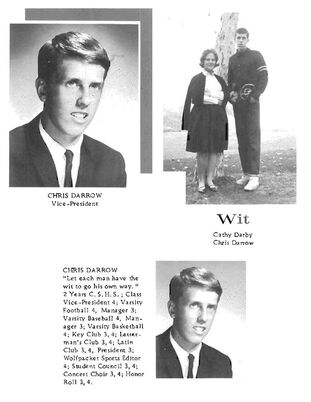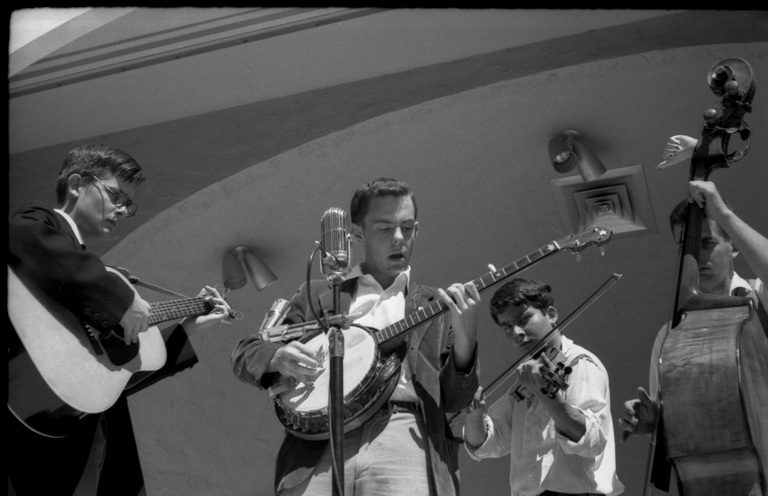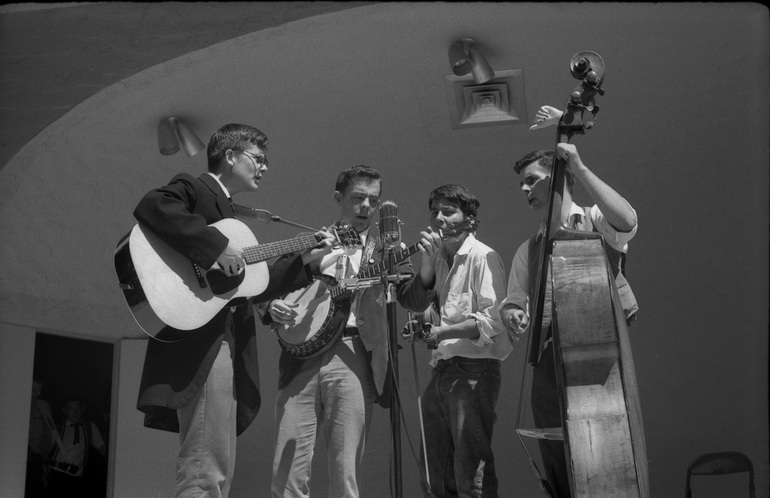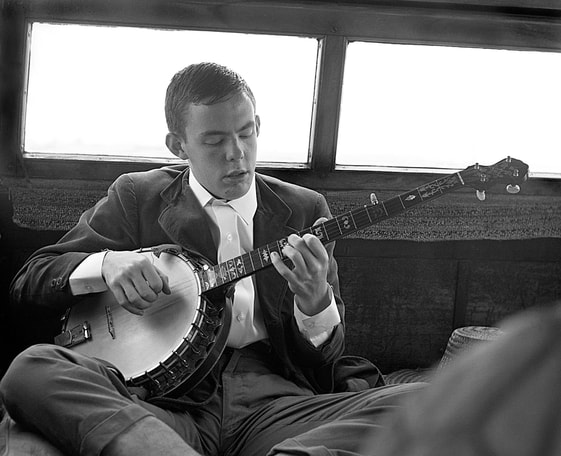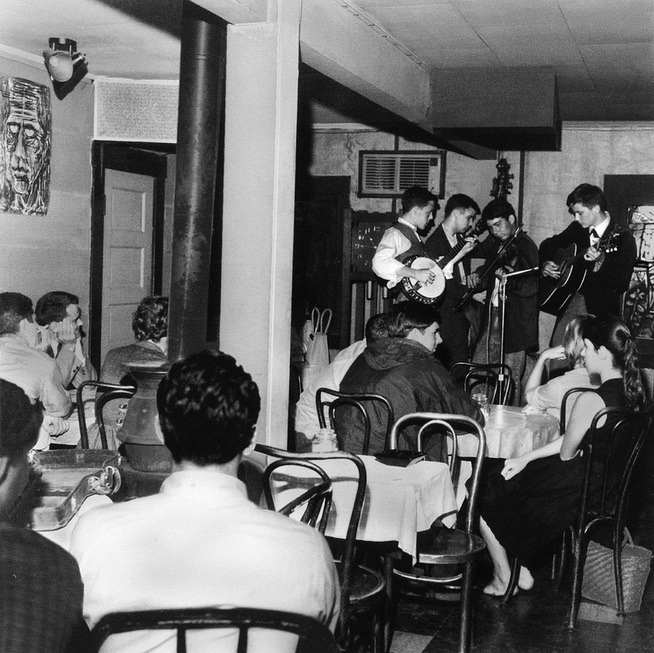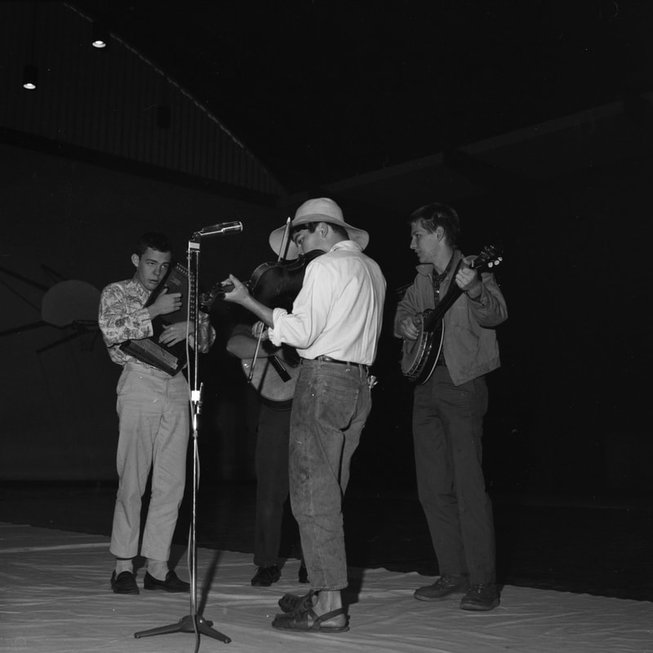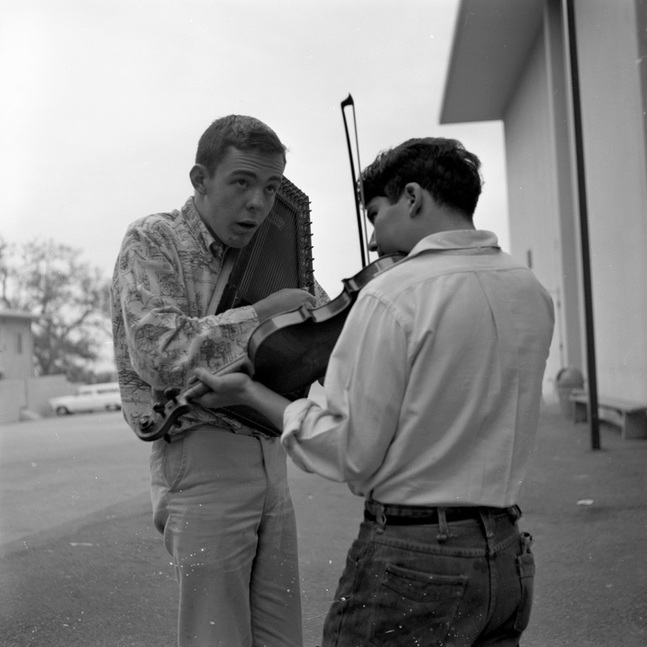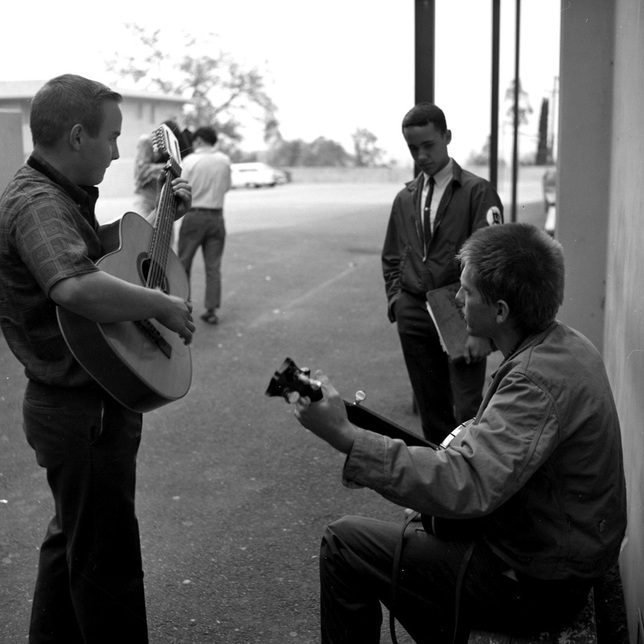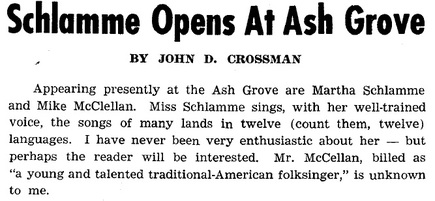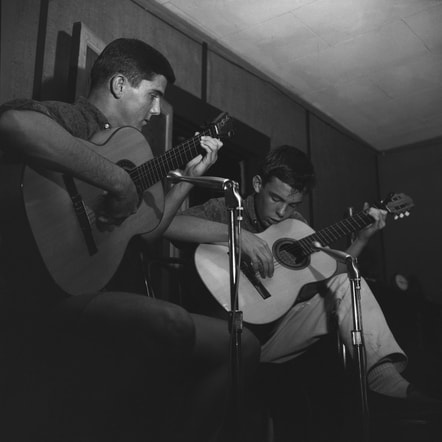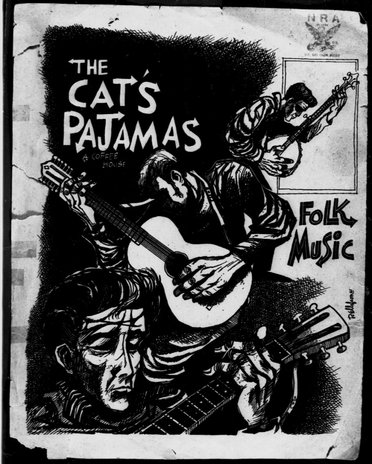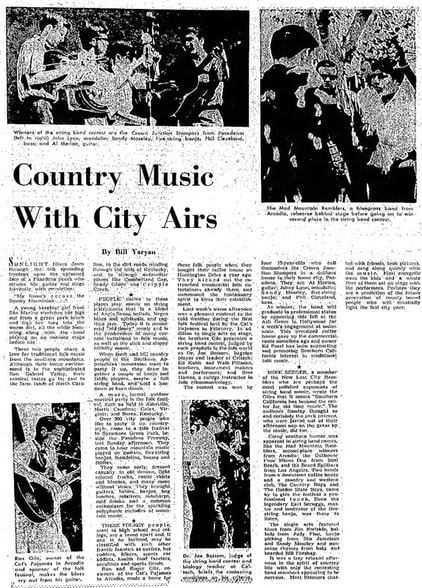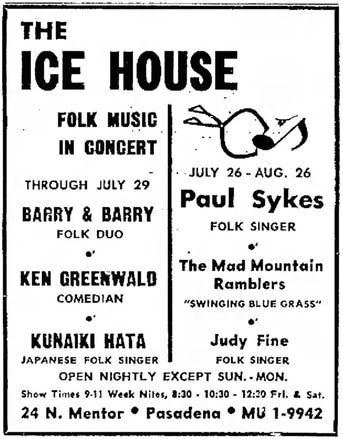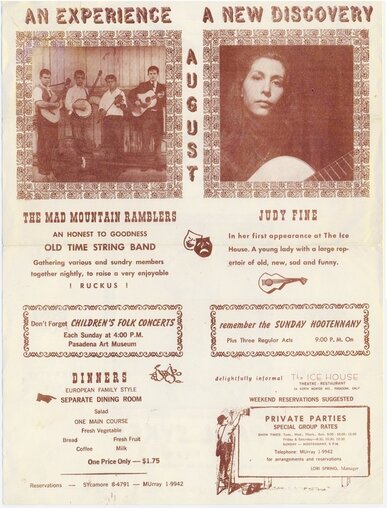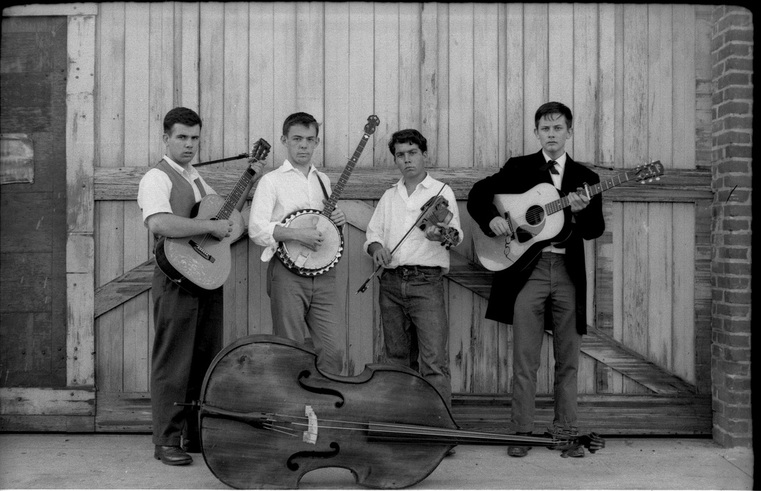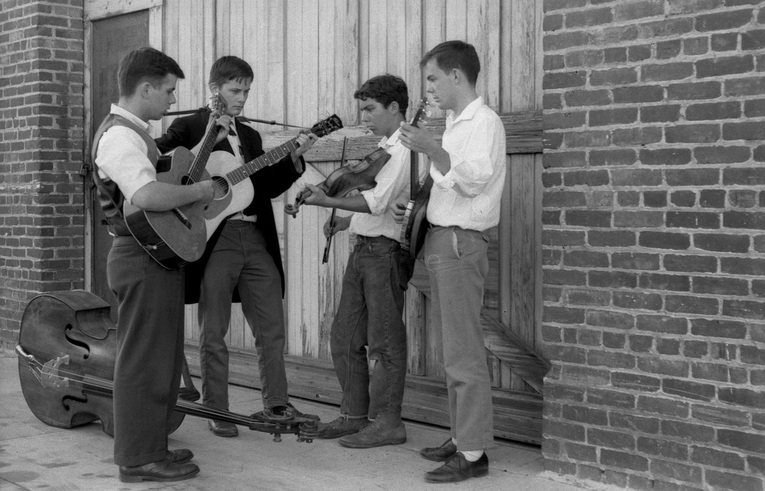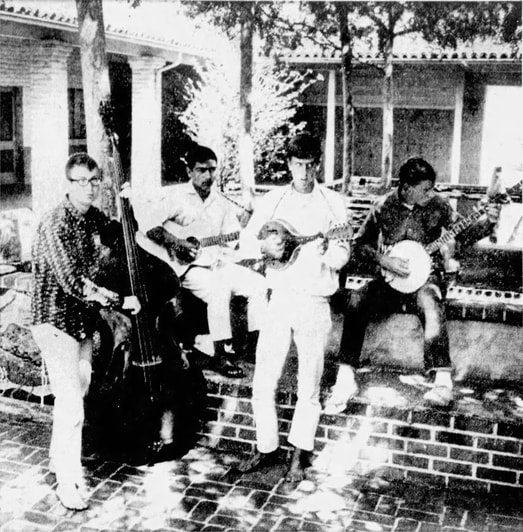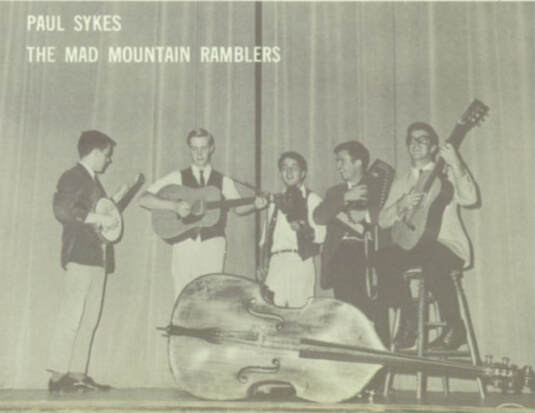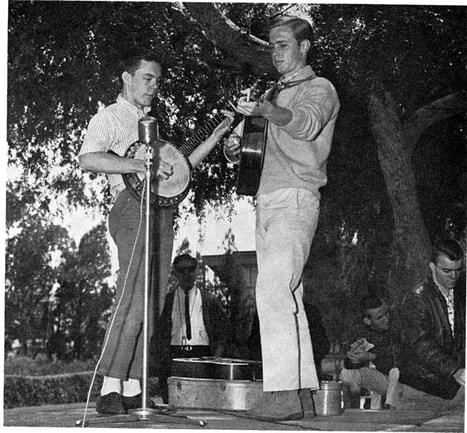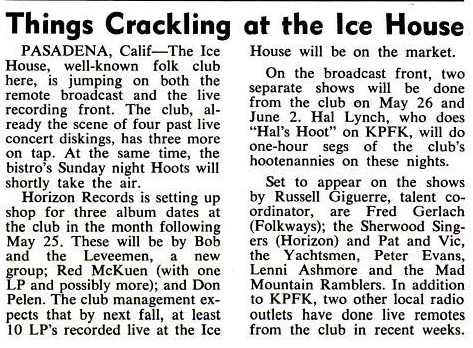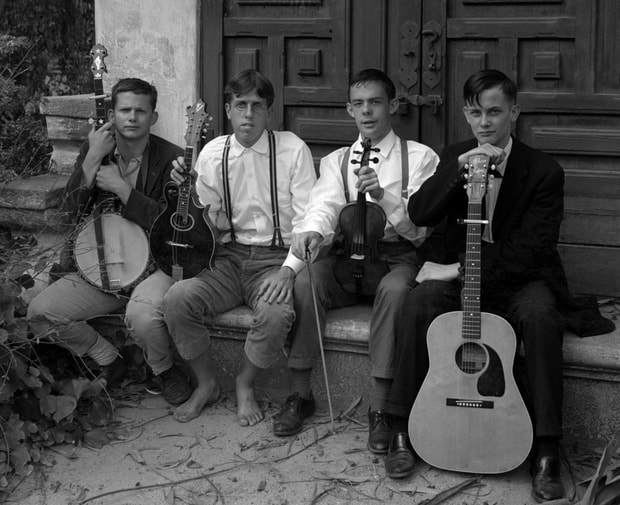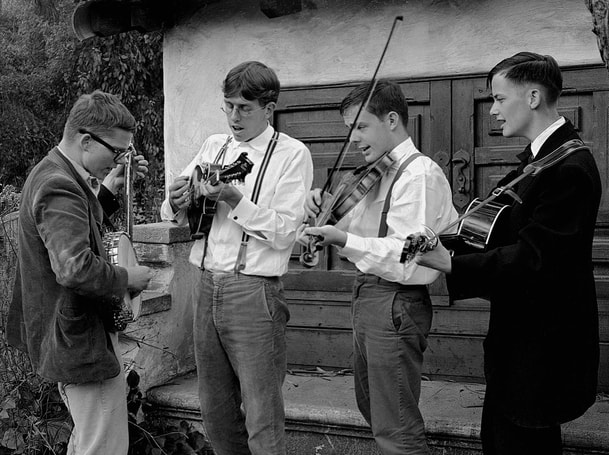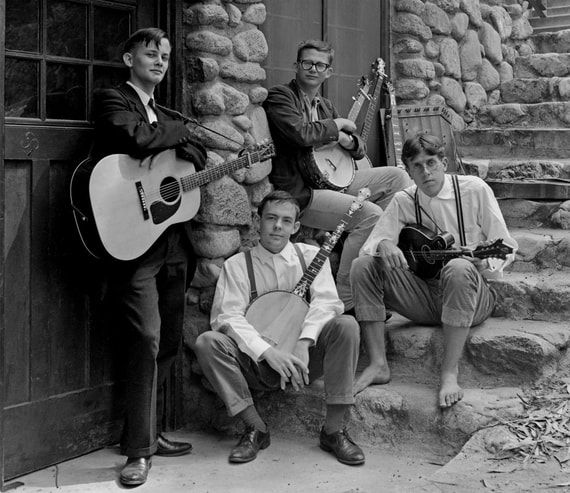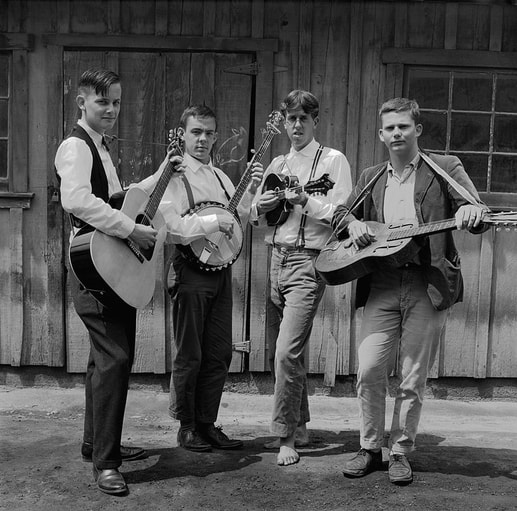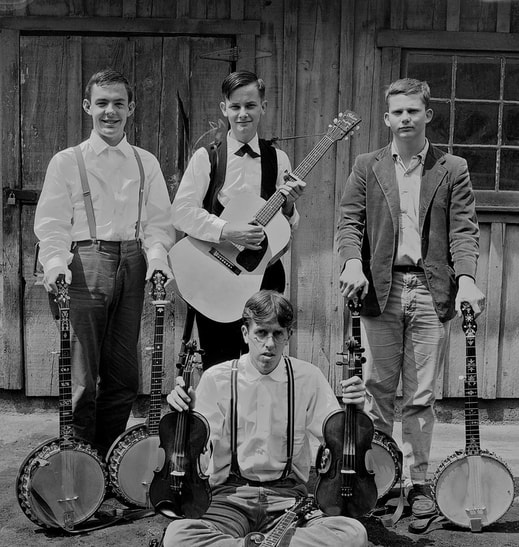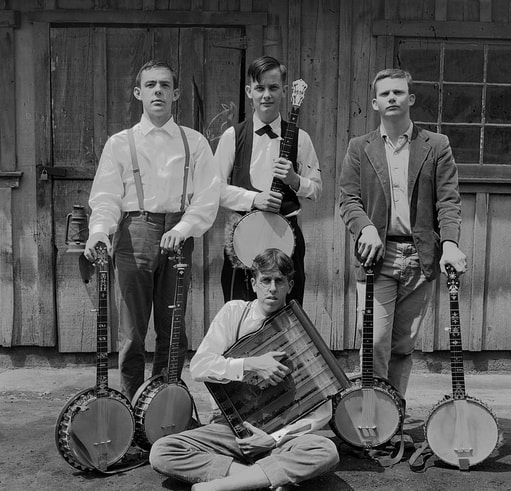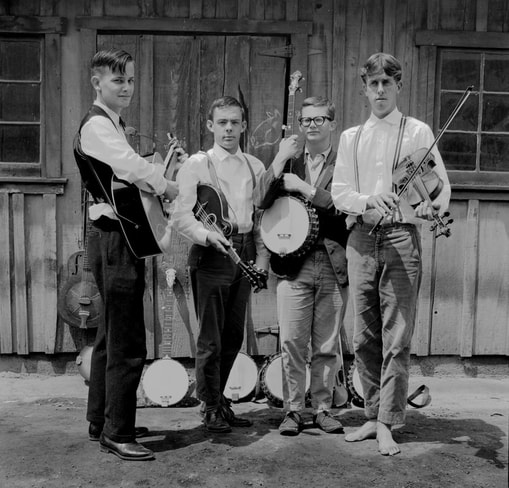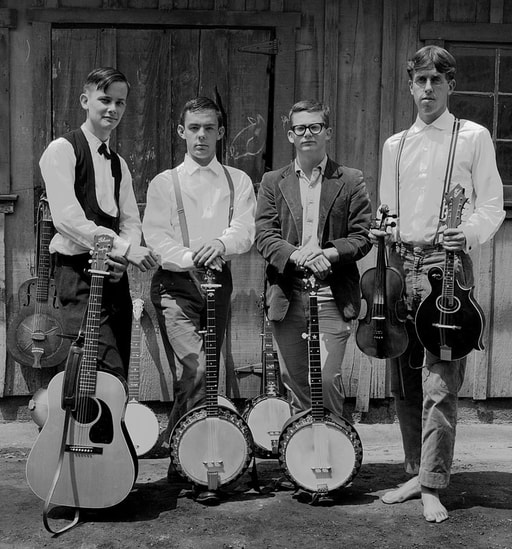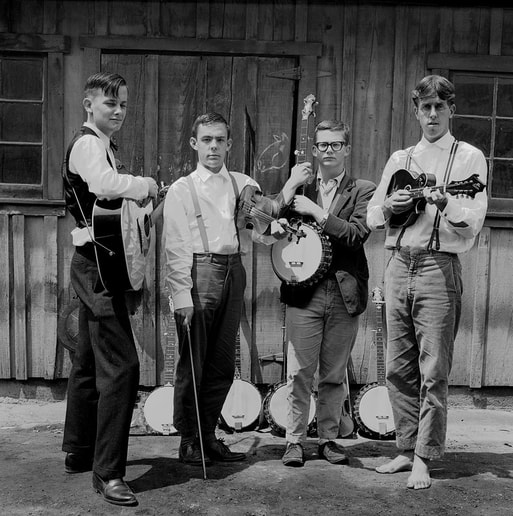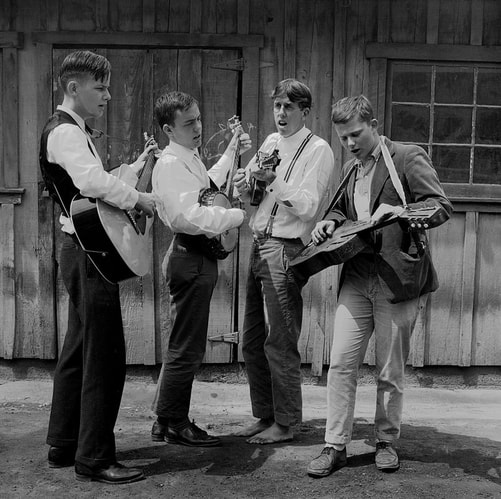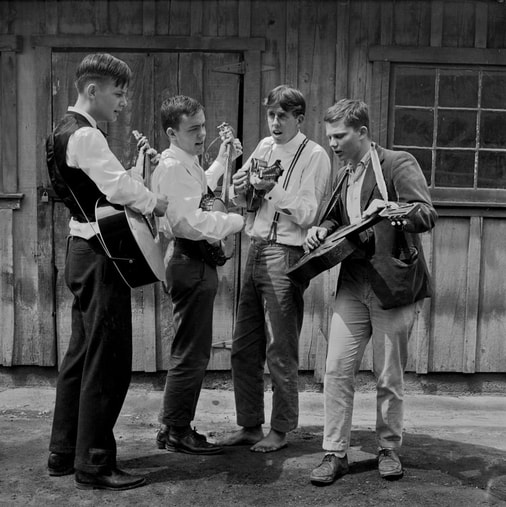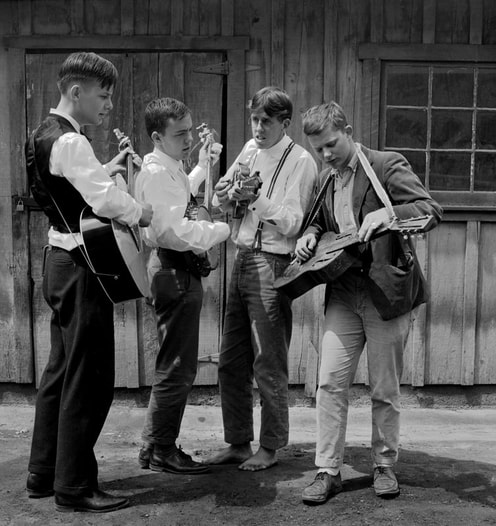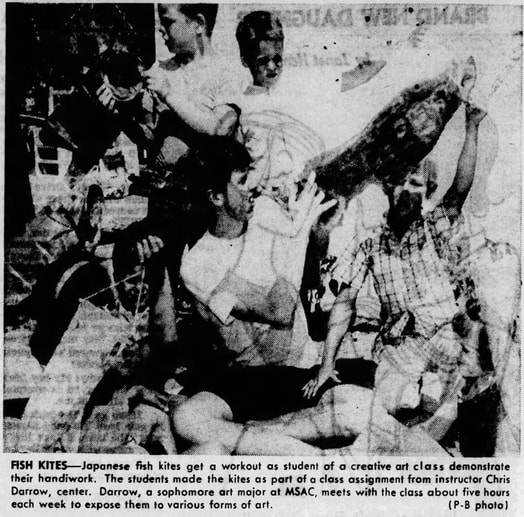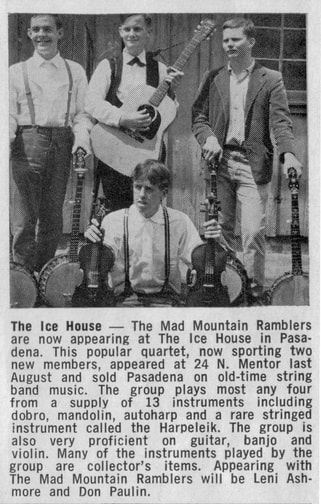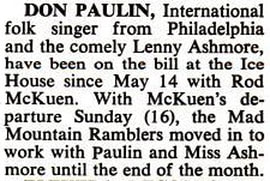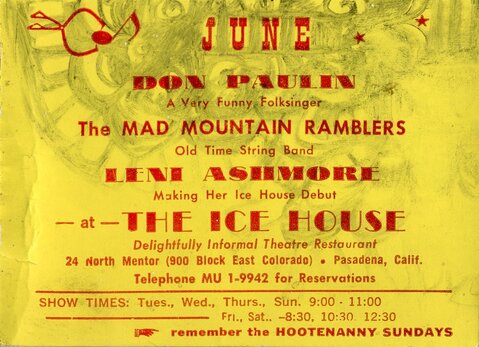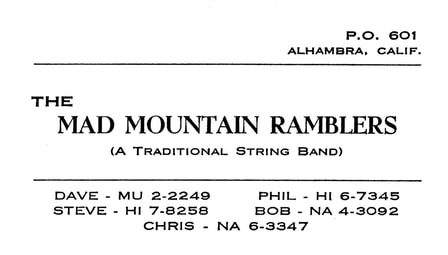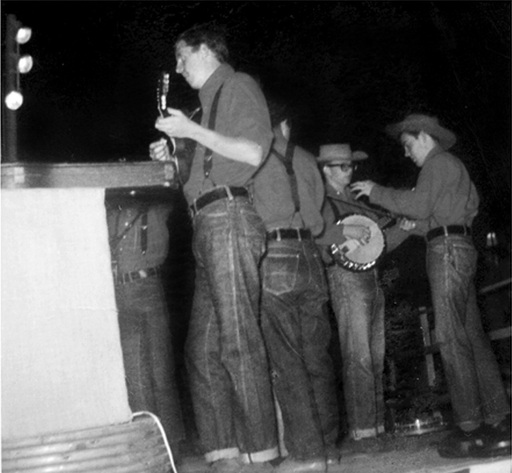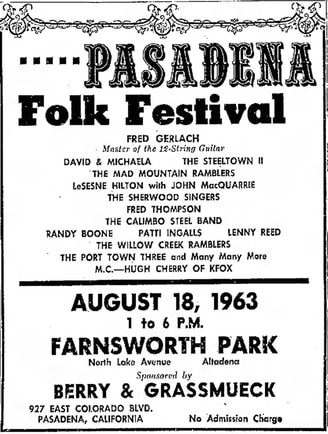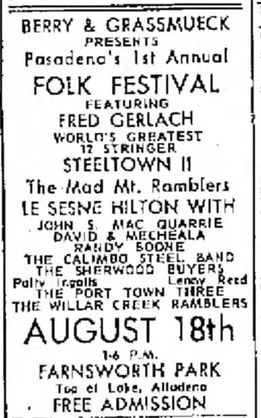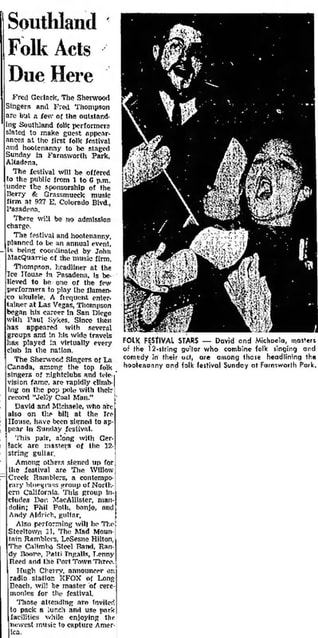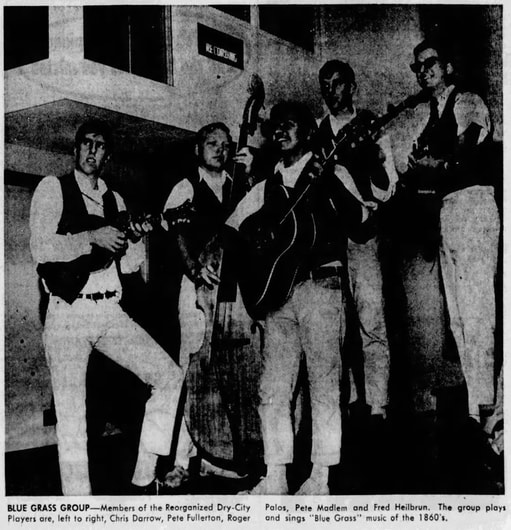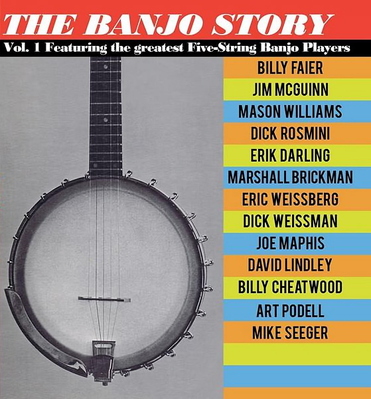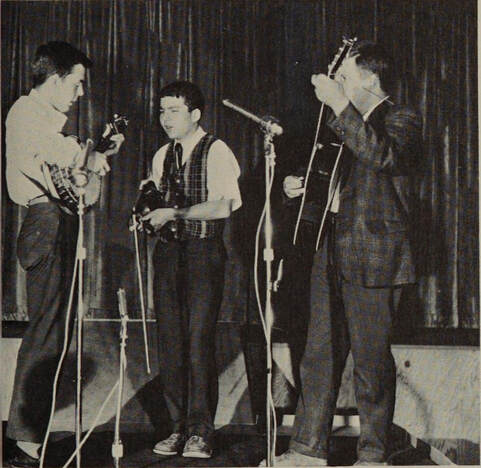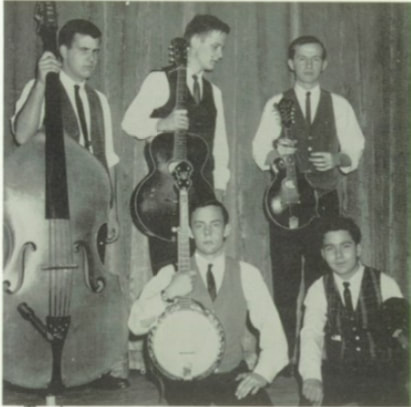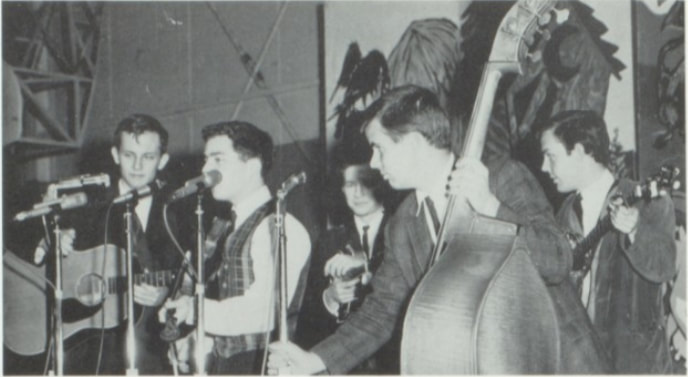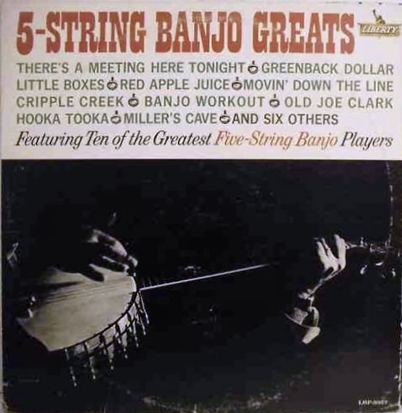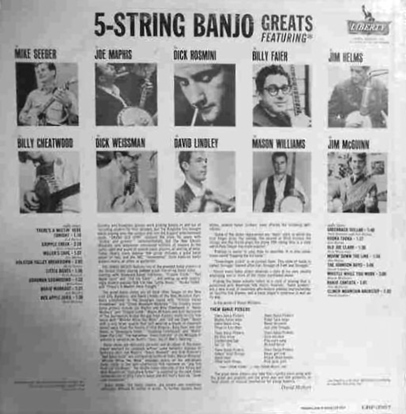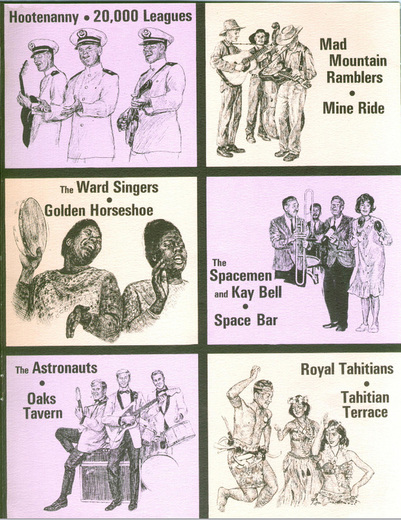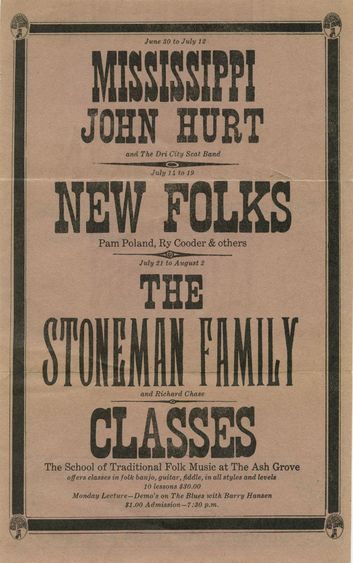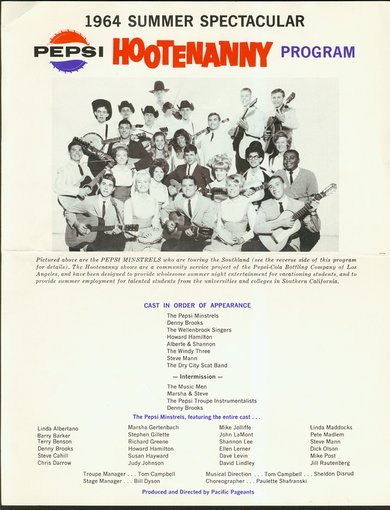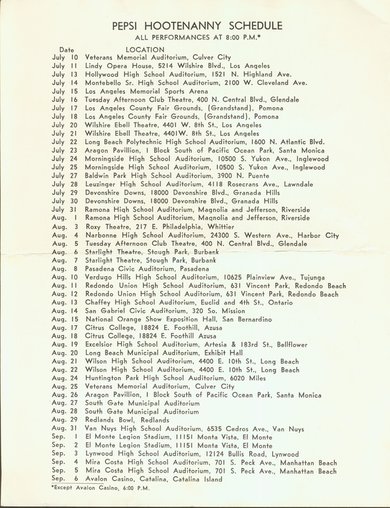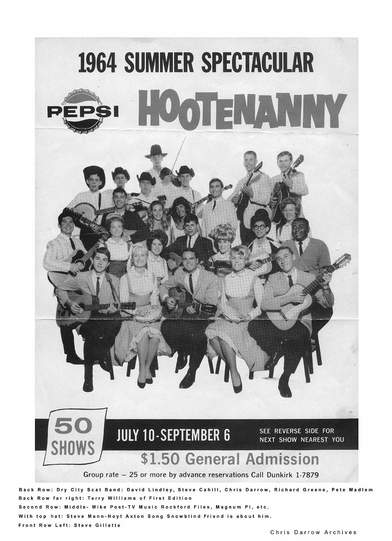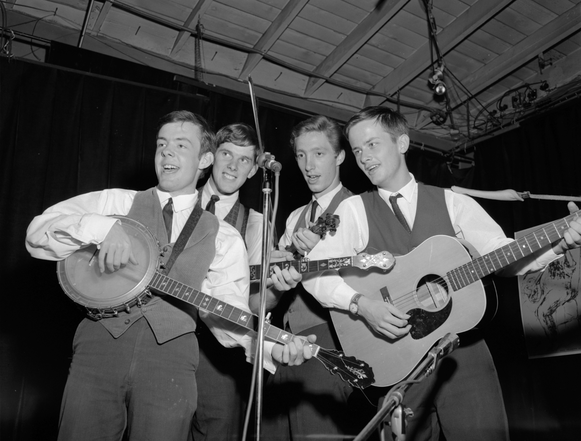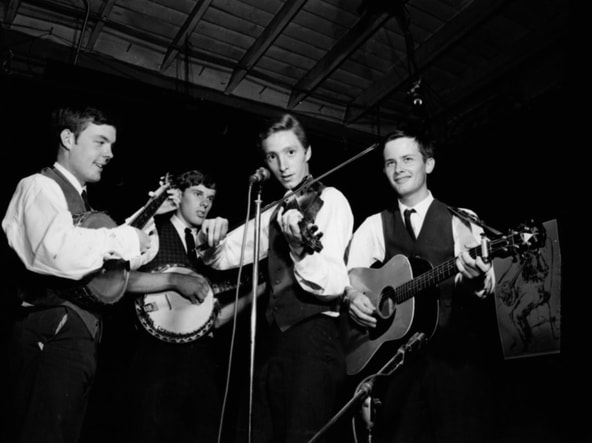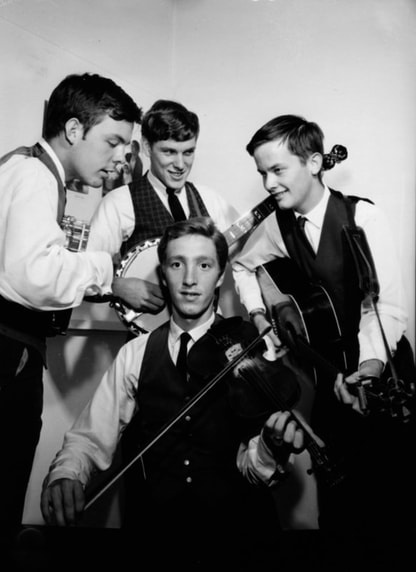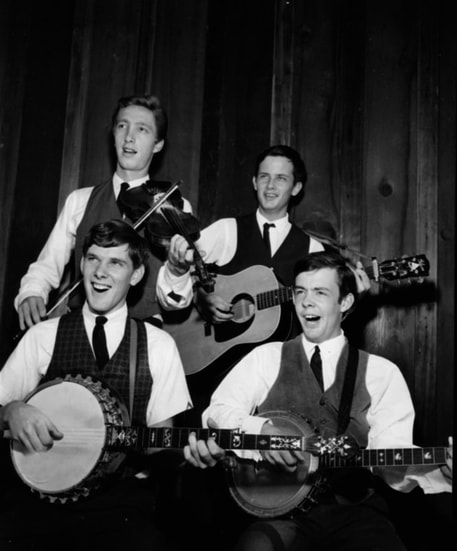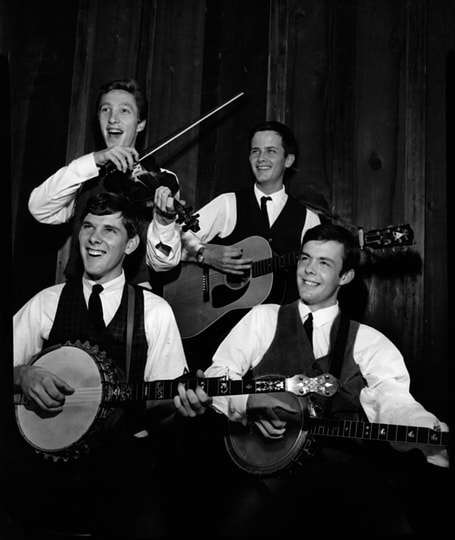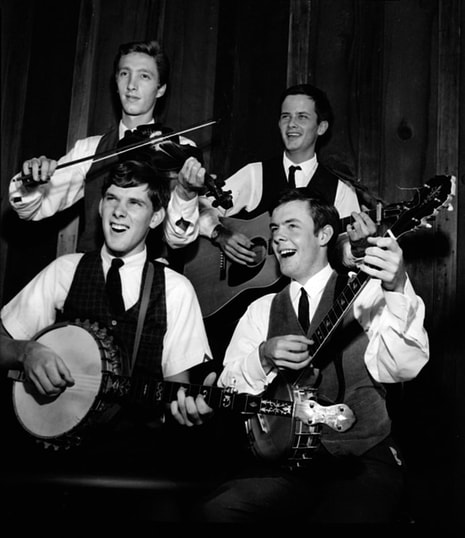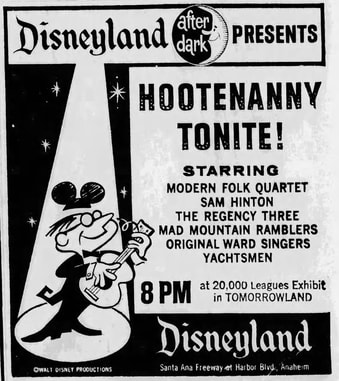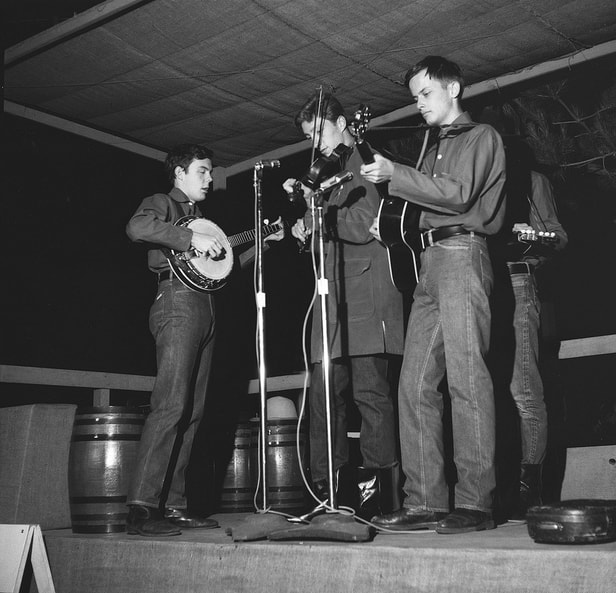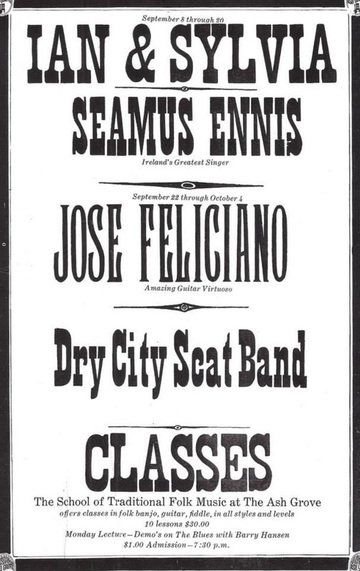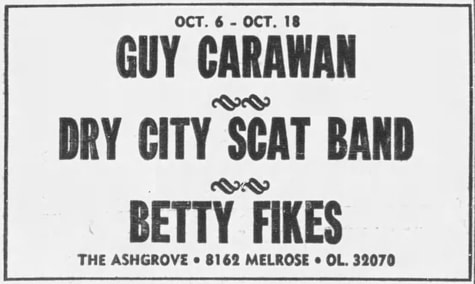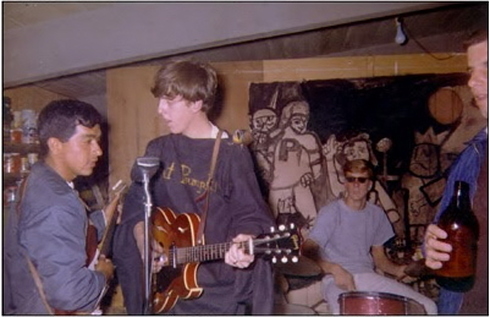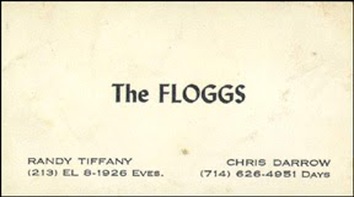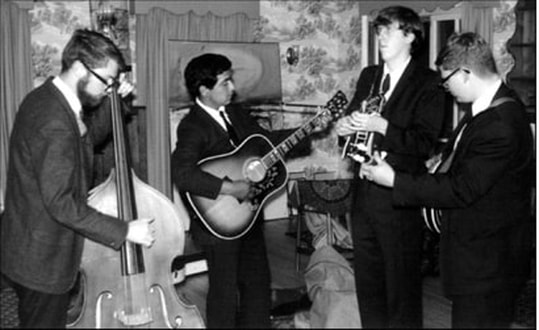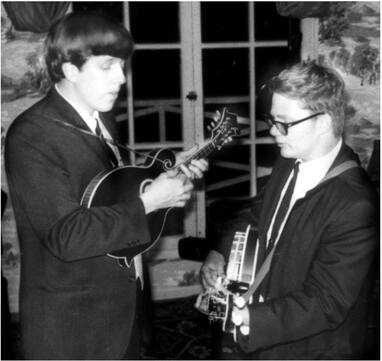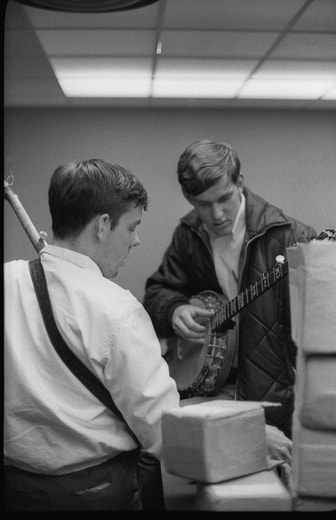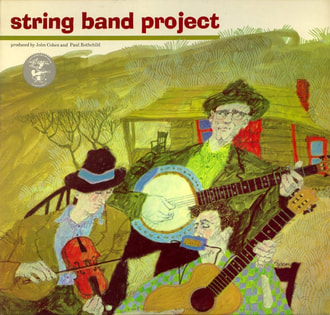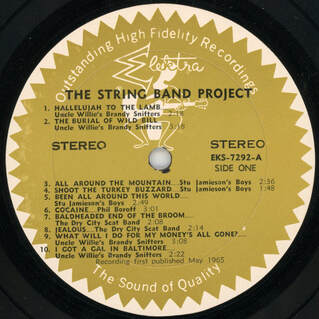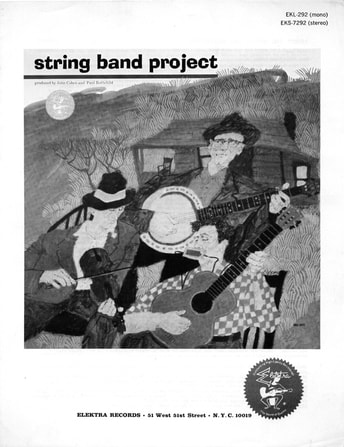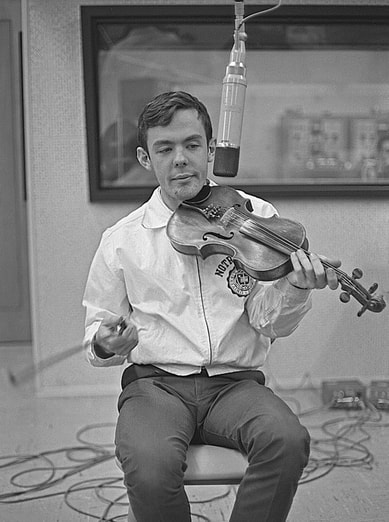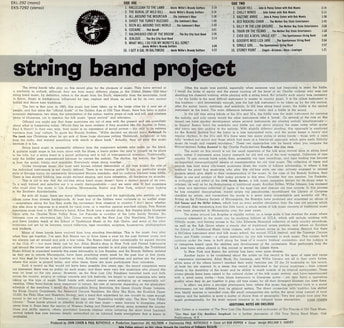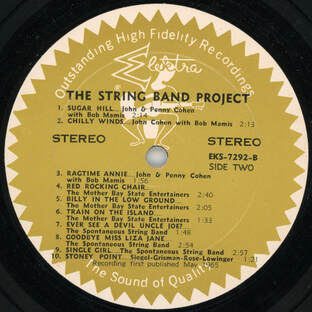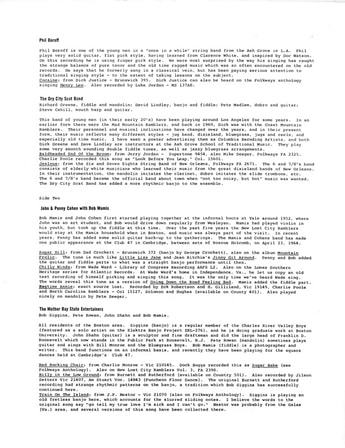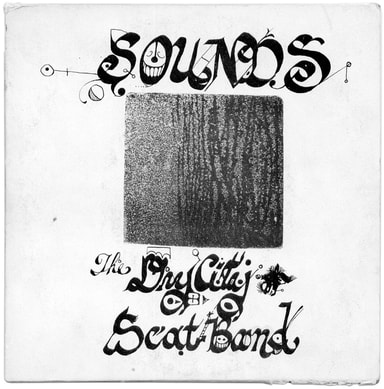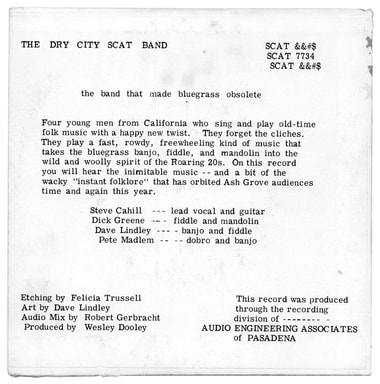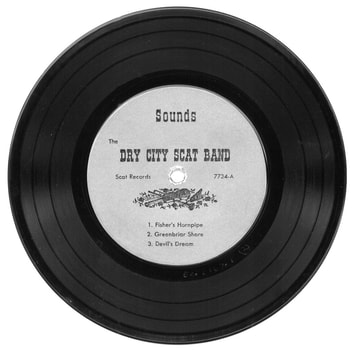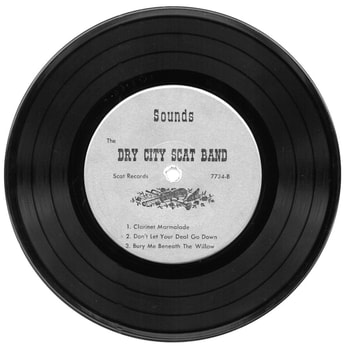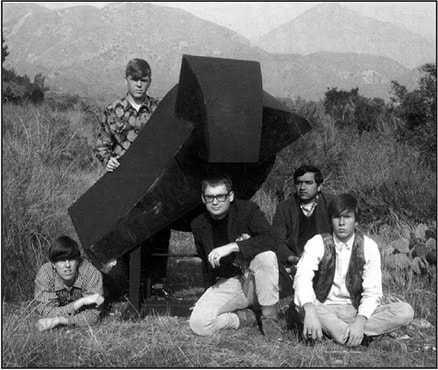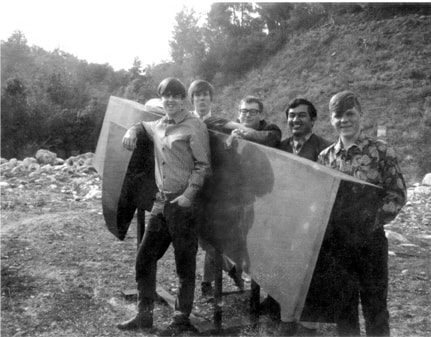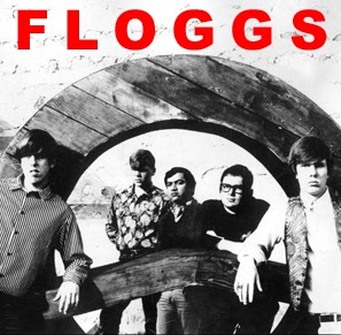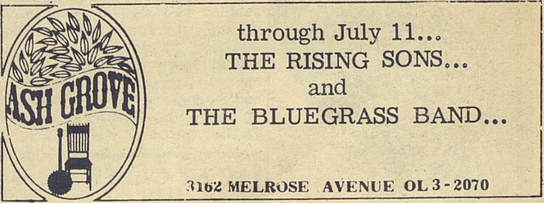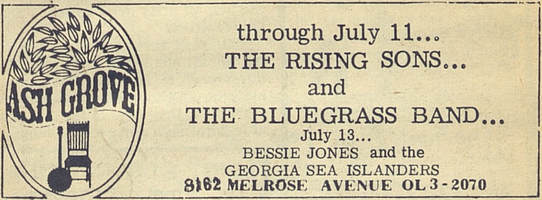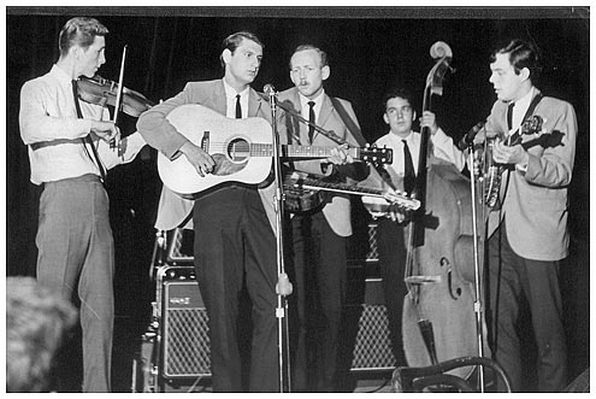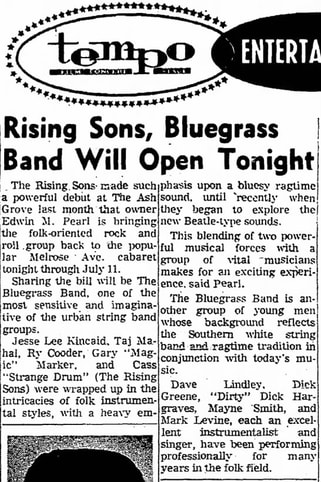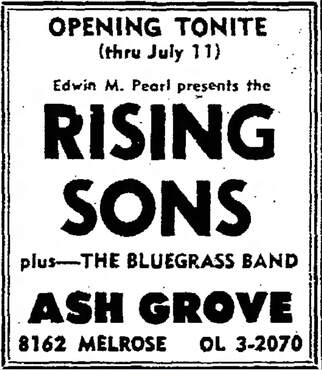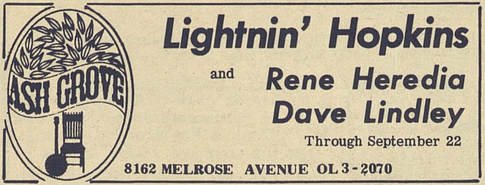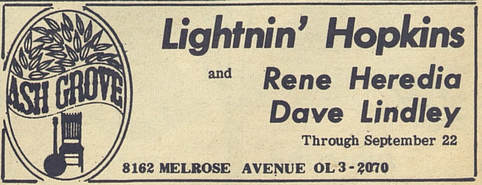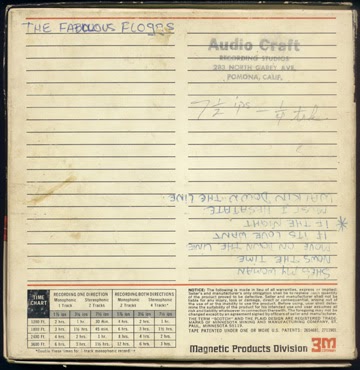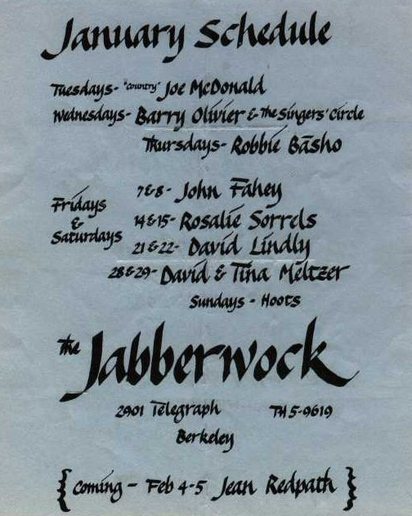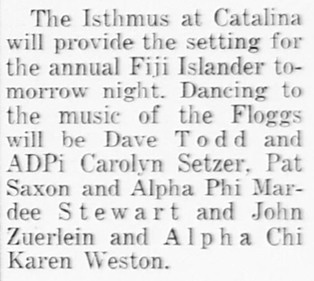If you enjoy what I have put together please consider donating any amount to support and help me to keep this valuable research going. Thanks!!
This day-by-day diary of David Lindley and Chris Darrow’s live, studio, broadcasting, and private activities is the result of three decades of research and interview work by Bruno Ceriotti, but without the significant contributions by other kindred spirits this diary would not have been possible. So, I would like to thank all the people who, in one form or another, contributed to this timeline: Chris Darrow (RIP), David Lindley (RIP), Bob Warford, Steve Cahill, Debbie Fawcett, Pete Fullerton, Mike McClellan, Fred Heilbrun, Bill T. DeBlonk, David Naiditch, Klemen Breznikar, Dan Collins, John Delgatto, Graham Bennett, Steve Gillette, Mayne Smith, Mark Beatie, Jason Odd, Los Angeles Free Press, Mark Wally McClellan, Mac Garry, Peter Lindblad, John Platt (RIP), Ellen Harper, Bill Yaryan, Comstock Lode, It's Psychedelic Baby Magazine, Steve Hyman, Tim Dowling, Ross Hannan, Corry Arnold, Jane Simon, Jeff Trentham, Mel Slocum, Andy Fuller, Sid Fridkin, Darrell Maddox, ZigZag, Van Nuys Valley News and Valley Green Sheet, Pasadena Independent, Long Beach Independent, Clive Perkins, Don, The Pomona Progress Bulletin, Los Angeles Times, Arcadia Tribune, Independent Star News, The San Bernardino County Sun, Webb School Yearbook, Claremont High School Yearbook, Valley Times, Ventura County Star Free Press, La Salle High School Yearbook, Herbert Hoover High School Yearbook, Arcadia High School Yearbook, Pasadena High School Yearbook, San Gabriel High School Yearbook, The Tidings (Los Angeles), The Register (Santa Ana, California), Porterville Recorder, Los Angeles Evening Citizen News, Santa Barbara News-Press, Variety.
Tuesday, March 21, 1944
David Perry Lindley was born in San Marino, Los Angeles County, California, as the son of Jack Lindley (b. John Young (later adopted Lindley), October 7, 1914, Utah - d. December 2, 1997, Los Angeles), a lawyer, and Margaret H. Wells (b. December 18, 1919, Los Angeles - d. July 15, 1985, Los Angeles), a housewife. David has three brothers, John Jr. (b. 1942), Patrick Howard (b. 1947), and Peter Dalton (b. 1950), and a younger sister, Anne M (b. May 21, 1953, Los Angeles). He has also several cousins, including fellow rockstars Linda Ronstadt, and Peter Lewis of Moby Grape!
Sunday, July 30, 1944
Christopher Lloyd Darrow was born in Sioux Falls, Minnehaha County, South Dakota, as the oldest child of artists Paul Darrow (b. October 31, 1921 - November 11, 2019) and Nadine Gunderson (b. December 11, 1920 - d. February 16, 1996). His dad Paul was also a self taught musician, who, in his younger days, played clarinet with The Mentor Street Maniacs, a traditional jazz band from Pasadena, California, and later in the 50s took up saxophone and started playing cool jazz. Chris' maternal grandfather Lloyd Gunderson was also a musician, he was into Hawaiian music and country music. Paul Darrow was in the army when his son was born in Sioux Falls, so Chris never really lived there. Right after Chris' birth, their parents took him back to their hometown of Pasadena, San Gabriel Valley, Los Angeles County, California.
David Perry Lindley was born in San Marino, Los Angeles County, California, as the son of Jack Lindley (b. John Young (later adopted Lindley), October 7, 1914, Utah - d. December 2, 1997, Los Angeles), a lawyer, and Margaret H. Wells (b. December 18, 1919, Los Angeles - d. July 15, 1985, Los Angeles), a housewife. David has three brothers, John Jr. (b. 1942), Patrick Howard (b. 1947), and Peter Dalton (b. 1950), and a younger sister, Anne M (b. May 21, 1953, Los Angeles). He has also several cousins, including fellow rockstars Linda Ronstadt, and Peter Lewis of Moby Grape!
Sunday, July 30, 1944
Christopher Lloyd Darrow was born in Sioux Falls, Minnehaha County, South Dakota, as the oldest child of artists Paul Darrow (b. October 31, 1921 - November 11, 2019) and Nadine Gunderson (b. December 11, 1920 - d. February 16, 1996). His dad Paul was also a self taught musician, who, in his younger days, played clarinet with The Mentor Street Maniacs, a traditional jazz band from Pasadena, California, and later in the 50s took up saxophone and started playing cool jazz. Chris' maternal grandfather Lloyd Gunderson was also a musician, he was into Hawaiian music and country music. Paul Darrow was in the army when his son was born in Sioux Falls, so Chris never really lived there. Right after Chris' birth, their parents took him back to their hometown of Pasadena, San Gabriel Valley, Los Angeles County, California.
1946
David Lindley was two years old when one of his older brothers gave him the fastest kiddy car on the block. One day, he took the car to the top of a hill and then proceeded downwards at an ever-increasing speed - halfway down, the car started to leave his control and ended up crashing into a very sticky, prickly and solid palm tree. Unfortunately his face also connected at great speed with the tree, resulting in a broken nose and several other facial bones, which is very difficult for young children to achieve. "It was an experience that I wouldn't forget," David confirms in an interview with John Platt for the British rock magazine Comstock Lode in December 1976. "My brother put me on that little gray wagon and took me home. I was an absolute mess. My mother really did take me round to show people and said 'Oh God! None of my other children look like this!'"
1946 (?)
Chris Darrow and his family relocated to Claremont, a city thirty miles east of downtown Los Angeles, at the base of San Gabriel Valley, after his father Paul get a job as art teacher at the local Scripps College. The family home was located at 403 Blaisdell Drive, in a mixed race white and hispanic neighborhood called Arbol Verde. It was there that Chris’ younger sister Joan Christine was born on March 14, 1947, as well as his other younger sister Elizabeth Ann on April 29, 1951, and last but not least his younger brother Eric Paul on December 26, 1952. Joan Christine, aka ‘Joanie,’ played flute with Leonard Harper’s Afro-Cuban Band in the 60s (Leonard was Ben Harper’s father), then married David Lindley (who else!) on November 26, 1968, and finally she became a photographer, printmaker and painter. Elizabeth later became a painter, and Eric later became a ceramic artist.
1948/49
Chris Darrow was only four or five years old when he learned to play a number of songs on ukulele, and he could sing them too. However, his baby sister Joan sat on ukulele one day, and broke it! After that he only sang in school choirs and glee clubs until he began to play clarinet many years later.
1950
Chris Darrow received treatment for polio at Casa Colina Hospital and Centers for Healthcare in Pomona, Los Angeles County.
September 1953
Chris Darrow’s father Paul became the director of the annual Padua Hills Art Fiesta, the San Gabriel Valley’s unique art show which was inagurated that year and was set for one week in the cool, Spanish-arcade walks and patios of the famous Padua Hills Theater and dining room lobby. Primarily a critique for artists - one of those short, but necessary, “breathers” when student and teacher pause to evaluate what has been accomplished - the event also provides an opportunity for the public to view firsthand some of the finest work by artists-craftsmen of the Claremont-Padua Hills area. According to Paul Darrow, the fiesta will emphasize a work-shop-demostration theme in order that visitors may meet artists in person while they demonstrate their methods and discuss techniques. Informal exhibitis will include painting, mosaic, ceramics, enamel, weaving, sculpture, etching, silk screening, jewelry, glass and wood creations. Paul, among others, will demonstrate how a finished pot or bowl is formed from a shapeless mass of clay on the potter’s wheel.
Monday, November 16, 1953
In full regalia, N.L. Bench, an Indian chief, presented achievement awards to 22 Claremont Cub Scouts on Monday night at Meet. Cubs from Pack 3, Dens 1, 2, 3, 4, 5, 7, and 9 were the recipients of honors. As one of the Cubs of Den 1, Chris Darrow received a one-year service star. Chris’ neighbor and best friend Roger Palos, also of Den 1, received a one-year service star too. Another friend and future bandmate of Chris, Bill Stamps of Den 3, was granted an assistant denner stripe.
August 1956
In weekly glider competition at the Oakmont School in Claremont, Chris Darrow topped the 10-over division after his craft stayed aloft for 23.2 seconds. Trailing were David Eisenbrey (14.2), Tom Street (10.5) and Pete Street (8.1).
1956 - 1958
Chris Darrow was in junior high school when he took some private clarinet lessons and played it on the school orchestra for a couple of years, at least until he put it away because he didn't like it very much!
Monday, July 14, 1958
As a player for the Stater Bros. baseball team, Chris Darrow contributed doubles in the 4-3 victory against Union Oil in the Claremont Pony League action that night.
September 1958 - June 1960
Chris Darrow attended the Webb School of California, a private college prep school for boys located at 1175 West Baseline Road in Claremont, where his father Paul guided the art class at least since 1956. “I attended [Webb] for about a couple of years,” he recalled in an interview with Mac Garry for ZigZag magazine in January 1976. "[My future bandmates] Bob Warford and Richard Greene were there at the time too, and Robert Mitchum’s son was in my class. It was basically a school for rich kids, but I was getting my tuition free, because my father taught art there… And I’d wanted to transfer there because I was really into athletics and they started inter-school athletics a year earlier at Webb.” There, Chris was a member of the football, baseball, and basketball teams.
September 1958 - June 1962
David Lindley attended La Salle High School, a private, Roman Catholic college preparatory high school run by the Christian Brothers organization, and located at 3880 East Sierra Madre Boulevard in Pasadena, San Gabriel Valley, Los Angeles County, California. "I was actually going to be a Christian Brother at one time, but decided not to," David recalls in an interview with John Platt for the British rock magazine Comstock Lode in December 1976. "I was going to make wine and brandy and teach. However, I met a girl who introduced me to all kinds of other things… But that whole calling - you either get religion or you don't. I wanted to be in the Order; usually you're not ordained - it's mostly guys who were teachers for whom I had a lot of respect, and I kinda wanted to be one. I'd never seen classes conducted in that way, with such control. Like one guy called Brother Emery who was an athlete; I was into track and field at that time (so was Chris Darrow, as it happens). I was going to teach but I discovered the banjo instead."
Fall 1958
Chris Darrow purchased his first acoustic guitar at a small, family-run instrument shop called the Folk Music Center, on Harvard Avenue, in Claremont. The Folk Music Center, opened by Charles and Dorothy Chase last August and still open to date, was a godsend to a kid like him who wanted to play guitar and learn about folk music. You could take an instrument home and play it while you were paying it off. By the way, Chris learned to play the guitat self taught and soon after he began his musical career singin' and playin' acoustic guitar along with his neighbor and best friend Roger Palos, a Mexican-born who also sings and plays acoustic guitar. The songs that they learned were from the folk music genre (The Kingston Trio were a major influence), and popular songs from Elvis Presley, Everly Brothers, Buddy Holly, and Ritchie Valens. “I started playing locally with my best friend, a real good guy called Roger Palos, who was a Mexican from my neighbourhood (which was basically Mexican)," Chris confirms in an interview with Mac Garry for ZigZag magazine in January 1976. "We used to sing and play guitar together at parties and so on... and I wrote my first songs – teenage heart-throb things, you know... real meaningful songs about my girlfriends – like one called ‘Oh Linda’, I remember." "But after a year or so," he adds, "I realized that I could play guitar as well as most of the people on the folk scene - and most of the my enthusiasm for commercial folk music dried up real fast, and I fell in love with the blues. That’s when I started spending most of my spare time in the shop, just listening to records by Big Bill Broonzy, Brownie [McGhee] and Sonny [Terry], anything I could get my hands on… Chas [Charles Chase] played me that Earl Taylor record [Earl Taylor and The Stoney Mountain Boys' album 'Folk Songs From The Blue Grass'], and I was hooked. Bluegrass music took over my whole life.”
Fall 1958
Chris Darrow purchased his first acoustic guitar at a small, family-run instrument shop called the Folk Music Center, on Harvard Avenue, in Claremont. The Folk Music Center, opened by Charles and Dorothy Chase last August and still open to date, was a godsend to a kid like him who wanted to play guitar and learn about folk music. You could take an instrument home and play it while you were paying it off. By the way, Chris learned to play the guitat self taught and soon after he began his musical career singin' and playin' acoustic guitar along with his neighbor and best friend Roger Palos, a Mexican-born who also sings and plays acoustic guitar. The songs that they learned were from the folk music genre (The Kingston Trio were a major influence), and popular songs from Elvis Presley, Everly Brothers, Buddy Holly, and Ritchie Valens. “I started playing locally with my best friend, a real good guy called Roger Palos, who was a Mexican from my neighbourhood (which was basically Mexican)," Chris confirms in an interview with Mac Garry for ZigZag magazine in January 1976. "We used to sing and play guitar together at parties and so on... and I wrote my first songs – teenage heart-throb things, you know... real meaningful songs about my girlfriends – like one called ‘Oh Linda’, I remember." "But after a year or so," he adds, "I realized that I could play guitar as well as most of the people on the folk scene - and most of the my enthusiasm for commercial folk music dried up real fast, and I fell in love with the blues. That’s when I started spending most of my spare time in the shop, just listening to records by Big Bill Broonzy, Brownie [McGhee] and Sonny [Terry], anything I could get my hands on… Chas [Charles Chase] played me that Earl Taylor record [Earl Taylor and The Stoney Mountain Boys' album 'Folk Songs From The Blue Grass'], and I was hooked. Bluegrass music took over my whole life.”
CHRIS DARROW & ROGER PALOS (FALL 1958 - 1960 (?))
1) Chris Darrow vocals, acoustic guitar
2) Roger Palos vocals, acoustic guitar
1) Chris Darrow vocals, acoustic guitar
2) Roger Palos vocals, acoustic guitar
1958
David Lindley starts play his dad's baritone ukulele.
1958/59
Chris Darrow starts giving private acoustic guitar lessons almost every day and for many years (at least until 1966). It was also around that time that he learned to play dobro, banjo, fiddle, and mandolin, all self taught!
December 1958/January 1959
Chris Darrow saw one of his music idols, Ritchie Valens, play at the Rainbow Gardens, 150 East Monterey, Pomona, San Gabriel Valley, Los Angeles County, California, just a month or so before his death. By the way, the opening act were Jan & Dean, and the house band were Manuel and The Renegades or The Mixtures.
Early May 1960
David Lindley and his La Salle High School classmate Joe Smith entered an art contest sponsored by Mount St. Mary’s College in Los Angeles. The two artists brushed away competitors with Joe’s original oil seascape who won him $35 first place in the high school division, and with David who won third place cash prize.
1960 (?): 'Annual Banjo And Fiddle Contest', Knott's Berry Farm, 8039 Beach Boulevard, Buena Park, Orange County, California
David Lindley entered an invitational Banjo/Fiddle Contest, which was held every year at the Knott's Berry Farm, California's best amusement park. Anyway, I do not know if he won or not.
September 1960 - June 1962
For his junior and senior years, Chris Darrow moved from Webb School to Claremont High School, a public high school located at 1601 North Indian Hill Boulevard, nestled in the northern foothills of the Pomona Valley in Claremont. There, Chris reunited with his best friend, and now classmate, Roger Palos who attended that school since his freshman year in 1958-59. Although not in the same class, Chris also met two future bandmates there, both a year below him, Pete Fullerton and Pete Madlem. During his two years at Claremont HS, Chris played in the football team (with Pete Madlem) and (as guard) in the basketball team (both called the Wolfpack after the school logo). Footnote: Frank Zappa’s younger brother Bobby also attended that school at the time and was a senior in 1960-61.
Fall 1960
David Lindley and his La Salle High’s schoolmate Richard Ernest ‘Dick’ Hargreaves (b. Tuesday, November 21, 1944, Los Angeles - d. Sunday, December 13, 1998), another bluegrass aficionado who played fiddle, mandolin and 12-string guitar, started messing around with the idea of forming a bluegrass group together and at some point Dick suggested to bring his friend Jane Adele Simon (b. Wednesday, July 24, 1946, Los Angeles) in for vocals. Jane had met Dick a few years earlier when both attended the Holy Angels School, a private Catholic K-8 school in Arcadia. She sang in the school choir and remembers screwing around, hiding in the back, singing lower that the rest, and maybe that caught Dick’s attention. By the fall of 1960, Jane was a freshman at Alverno Heights Academy, an indepenent progressive Catholic all-girls high school in Sierra Madre just blocks from La Salle High, and this is when she and Dick reconnected. At that point the fledgling unnamed trio would meet at Dick’s house on Friday nights to practice, especially since Dick cooked home made pizza on those nights. After performing live a few times at small things like a retirement home, the trio disbanded after David proposed to Jane to learn the banjo but she had no desire so her involvement with the group ended pretty soon. At that point Jane was more into David himself and less into the music and in fact they started dating and stayed together until the summer of 1962 when the relationship faded away as David moved on to Pasadena City College to study art.
UNNAMED TRIO (FALL 1960)
1) David Lindley 5-string banjo, fiddle, vocals
2) Dick Hargreaves mandolin, fiddle, 12-string guitar, vocals
3) Jane Simon vocals
1) David Lindley 5-string banjo, fiddle, vocals
2) Dick Hargreaves mandolin, fiddle, 12-string guitar, vocals
3) Jane Simon vocals
Saturday, December 17, 1960 (?)
Chris Darrow and other Junior Red Cross members of the Claremont chapter contributed to the holiday season with a party for a ward of patients at Pacific State Hospital. The patients were treated to an evening of party favors, music, cookies and ice cream. Carolyn Hertz entertained with piano and accordion selections and Roger Palos with his guitar. Junior Red Cross members, including Chris, sang carols and popular songs with the ward.
Thursday, February 2, 1961
Parents of Claremont High School juniors sponsored a Mexican Fiesta-theme taco dinner from 5 to 8pm in the Sycamore School cafeteria, to help defray costs of senior graduation activities for the class of 1962. Chris Darrow and his junior schoolmates Roger Palos, Bill Perkins and Roger Lober, accompanied on acoustic guitars a group of ten other junior students who serenaded dinners singing Spanish songs under the direction of Donald Patterson, their language teacher. Chris’ father Paul - cartoonist, artist and muralist - was there too making caricatures of guests at his easel.
Friday, March 17 - Saturday, March 18, 1961
The concert choir and orchestra of Claremont High School, which included Chris Darrow and his best friend Roger Palos, presented an operetta concert show opened to the public. The choir presented the operetta Down In The Valley by Kurt Weill and Arnold Siendgaard under the direction of Chester Cox, while the orchestra played the score from Sound of Music and other selections under direction of George Denes. Parts of the score for the operetta were based on American folk songs including ‘Down In The Valley,’ Lonesome Dave,’ ‘Little Black Train’ and others.
Early 60s
David Lindley teaches how to play different musical instruments at the Berry and Grassmueck music store located at 927 East Colorado Boulevard in Pasadena, and at the same time, he sometimes played together with Marty Nelson, another teacher of the music store (several years later Marty did the cover of Kaleidoscope's 2nd album, 'A Beacon From Mars'). By the way, the famous session drummer Jim Keltner was another teacher of the Berry and Grassmueck music store at the time.
Sunday, July 2 - Friday, July 7, 1961
Chris Darrow, as vice president of the senior class of ’62, represented Claremont High School at the annual American Junior Red Cross leadership training center being conducted this week at Camp Seeley. Chris - along with other two delegates, Carol Deregibus (sophomore) and Carol Finley (junior) - were chosen by the school principal and counselors for their leadership qualities and interest in the community. Activities at the center included workshops on Red Cross programs, sports, talent shows and movies. Camp Seeley’s buildings were log cabins and a lodge situated in the pines near Crestline. Tennis courts, a ball diamond and a swimming pool were part of its recreational facilities.
Summer 1961
Almost a year after the abruptly end of their short-lived unnamed trio with Jane Simon, David Lindley and Dick Hargreaves formed a new group with Steven John ‘Steve’ Cahill (b. Friday, April 5, 1946, Altadena, Los Angeles County), another La Salle High’s schoolmate and bluegrass aficionado who played mouth harp and 12-string guitar, and a college guy named Philip ‘Phil’ Cleveland who played string bass and 6-string guitar. The quartet called themselves the Mad Mountain Ramblers.
THE MAD MOUNTAIN RAMBLERS #1 (SUMMER 1961 - APRIL 1963 (?))
1) David Lindley 5-string banjo, fiddle, backup vocals
2) Dick Hargreaves lead vocals, mandolin, fiddle, 12-string guitar
3) Steve Cahill lead vocals, 12-string guitar, mouth harp
4) Phil Cleveland string bass, backup vocals, 6-string guitar
Sunday, August 20, 1961: ‘1st Annual Topanga Banjo And Fiddle Contest,’ Ian Thiermann's place amid the native oaks known as ‘Friendly Acres,’ Topanga Canyon, Santa Monica Mountains, Los Angeles County, California
David Lindley entered the first edition of the now popular annual Topanga Banjo And Fiddle Contest presented by the Santa Monica Society of Friends in Topanga Canyon. David took third or fourth place in the bluegrass banjo professional division, after performing a short set playing a five-string banjo accompanied by his fellow Ramblers bandmate Phil Cleveland on string bass, plus a recently new friend named Michael Bartlett ‘Mike’ McClellan (b. Monday, November 16, 1942, St. Louis, Missouri) on six-string guitar. David and Mike had met that same summer after the latter, just out of high school in Honolulu, Hawaii, moved to California to play music at the Cat’s Pajamas coffeehouse in Arcadia. It was there that the two met each other and started jamming together, mostly bluegrass stuff on five-string banjo, although at the time David played classical and flamenco guitar too, while Mike was also into blues and played guitar and harmonica too. According to David, Mike was a huge influence on the stuff he later did and the multi-instrumental aspect of it. By the way, McClellan also entered the bluegrass banjo professional division contest that year and took second place playing a five-string banjo accompanied by Lindley on six-string guitar and Cleveland on string bass. Last but not least, David’s future bandmate Richard Greene entered the contest too, winning the bluegrass fiddle professional division.
Sunday, September 10, 1961: 'Hootenanny', Cat's Pajamas, 166 East Huntington Drive, Arcadia, San Gabriel Valley, Los Angeles County, California
The Mad Mountain Ramblers were on the bill along with Al Merian, Mark Allen, Mike McClellan, Mad Marty, Pierce Powell, and many more.
Friday, September 22, 1961: Gymnasium, La Salle High School, 3880 East Sierra Madre Boulevard, Pasadena, San Gabriel Valley, Los Angeles County, California
David Lindley and Dick Hargreaves played at their high school for a closing/welcome to the Freshman class assembly, with an “ad-hoc” bluegrass group which also featured Mike McClellan and an unnamed 12-string guitar player. They called themselves the Smog City Tresle Hangers, a name which came from the teenage antics of crawling out under the trestle and trying to hold on while a train rumbled overheard (you know, the dare type of things that teenaged boys did). David and another classmate, Leonard ‘Lenny’ Reed (later an attorney), also performed together as a flamenco 6-string guitar duo. “In my earliest days when I was getting into flamenco guitar, there were things I would play with a guy called Leonard Reed,” confirmed David in an interview with John Platt for the British rock magazine Comstock Lode in December 1976. “We weren't called anything, we just used to play - we played assemblies, things like that. I just used to love flamenco.” Another local bluegrass band called the Cellar Dwellers was on the bill (their members were all La Salle students) and maybe it was their guitar player who also played with the Smog City Trestle Hangers as courtesy. By the way, Chris Darrow was there that day but did not play. After the performance, he and Dick Hargreaves where checking out banjos in either Chris's or Dick's woody station wagon in front of the school.
THE SMOG CITY TRESTLE HANGERS #1 (SEPTEMBER 22, 1961)
1) David Lindley autoharp, backup vocals
2) Mike McClellan 5-string banjo, lead vocals
3) Dick Hargreaves fiddle, backup vocals
4) ? 12-string guitar, backup vocals
1) David Lindley autoharp, backup vocals
2) Mike McClellan 5-string banjo, lead vocals
3) Dick Hargreaves fiddle, backup vocals
4) ? 12-string guitar, backup vocals
October 1961
At the annual meeting of the Claremont chapter of the American Red Cross, Chris Darrow, along with Carol Deregibus and Carol Finley, received a certificate of appreciation for participation in the Junior Red Cross leadership training center at Camp Seeley that past summer.
Friday, December 1 - Saturday, December 2, 1961: Ash Grove, 8162 Melrose Avenue, Fairfax, West Los Angeles, Los Angeles County, California
David Lindley (5-string banjo, 6-string guitar, vocals, autoharp) and Phil Cleveland (string bass, 6-string guitar), backed up their friend Mike McClellan (vocals, 5-string banjo, 6-string guitar) when the latter played as opening act for Martha Schlamme at the Ash Grove. Actually Mike played there from Tuesday, November 28 to Thursday, December 14 (on Monday the club was closed), but he asked David and Phil to back him up only on the Fridays and Saturdays show.
Friday, December 8 - Saturday, December 9, 1961: Ash Grove, 8162 Melrose Avenue, Fairfax, West Los Angeles, Los Angeles County, California
David Lindley and Phil Cleveland backed up again Mike McClellan at the Ash Grove.
1961/62: Cat's Pajamas, 166 East Huntington Drive, Arcadia, San Gabriel Valley, Los Angeles County, California
David Lindley and Lenny Reed performed together as flamenco 6-string guitarists.
Friday, March 16 - Saturday, March 17, 1962
Chris Darrow is one of the eleven members of the Claremont High School concert choir chosen for roles in the operetta The Lowland Sea presented by the Claremont High students during the evenings of March 16 and 17. Mrs. Sharp, choral leader at the high school, directed the production which was settled in a Nantucket Island off the Coast of Massachusetts. The operetta also included a Sailor’s Hornpipe dance featured, among others, Chris’ best friend Roger Palos.
Friday, May 4 - Saturday, May 5, 1962: 'Spring Showcase', Gymnasium, La Salle High School, 3880 East Sierra Madre Boulevard, Pasadena, San Gabriel Valley, Los Angeles County, California
David Lindley and Dick Hargreaves played again at La Salle High School as The Smog City Trestle Ramblers, but with a different lineup which included Steve Cahill from The Mad Mountain Ramblers, David's schoolmate Bill Bryson (d. May 1, 2017, California), Sandy Moseley, and his older brother Steve Moseley. The band played same songs both nights, and one of their performance (Friday? Saturday?) was also recorded on a reel-to-reel tape by a student called John Delgatto (where you can listen David Lindley who introduced himself as 'Lamar G. Gumbody', and Steve Cahill as 'Stinky Steve'). Apparently, these were the band's last gigs before split up. Sandy Moseley went to play with The Crown Junction Stompers (and then with The Greenwood County Singers), his brother Steve Moseley disappeared from the music scene, Bill Bryson went to play with The Indestructible Old Timey String Band, while David Lindley, Steve Cahill and Dick Hargreaves continued to play with The Mad Moutain Ramblers, of course! By the way, David Lindley and his classmate Lenny Reed also performed together again as flamenco 6-string guitarists.
THE SMOG CITY TRESTLE HANGERS #2 (MAY 4-5, 1962)
1) David Lindley (aka Lamar G. Gumbody)
2) Dick Hargreaves
3) Sandy Moseley 5-string banjo, acoustic guitar
4) Steve Moseley 5-string banjo, acoustic guitar
5) Steve Cahill (aka Stinky Steve) 12-string guitar
6) Bill Bryson fiddle
1) David Lindley (aka Lamar G. Gumbody)
2) Dick Hargreaves
3) Sandy Moseley 5-string banjo, acoustic guitar
4) Steve Moseley 5-string banjo, acoustic guitar
5) Steve Cahill (aka Stinky Steve) 12-string guitar
6) Bill Bryson fiddle
Sunday, July 1, 1962: ‘2nd Cat's Pajamas Folk Festival,’ Sycamore Grove Park, 4800 block North Figueroa Street, off the Pasadena Freeway near Avenue 43, Pasadena, San Gabriel Valley, Los Angeles County, California
Over 200 city people who like to party it up country-style, came this afternoon in Sycamore Grove Park for the second edition (the first one was held the previous February) of an outdoor folk festival sponsored by Ron and Roger Gile, twin brothers and co-owners of the Cat’s Pajamas in Arcadia. The bill featured blues from Jim Kweskin, folk ballads from Judy Fine, banjo picking from Stu Jameison and Sandy Moseley, nonsense rhymes from bald and bearded Bill Forshay, bluegrass from the Country Boys (soon-to-be Kentucky Colonels) and the Golden State Boys, and even Ron Gile makes the blues cry out from his acoustic guitar. The legendary Earl Scruggs, master and innovator of the five-string banjo, was there to listen. In addition to single acts on stage, the brothers Gile presented a ‘string band contest,’ judged by Dr. Joe Bossom, bagpipe player and biology teacher at the local California Institute of Techology; Ed Kahn and Walt Pittman, teachers, instrument makers and performers; and Bess Hawes, a college instructor in folk ethnomusicology. The Mad Mountain Ramblers participated along other local up-and-coming bluegrass bands such as the Crown Junction Stompers (John Lyon on mandolin, Sandy Moseley on five-string banjo, Al Merian on acustic guitar, plus Phil Cleveland on string bass on loan from the Ramblers), the Outhouse Four Minus One, and the Beard Splitters. In the end, the Mad Mountain Ramblers came in second place behind the Crown Junction Stompers who, as winner, will graduate to professional status by appearing this fall at the Ash Grove in Hollywood for a week’s engagement at union scale.
Sunday, July 22, 1962: ‘2nd Annual Topanga Banjo And Fiddle Contest,’ Camp Wildwood, 436 South Topanga Canyon Boulevard, Topanga Canyon, Santa Monica Mountains, Los Angeles County, California
David Lindley entered for the second year in a row the annual Topanga Banjo And Fiddle Contest presented by the Santa Monica Society of Friends in the wooded Camp Wildwood. David took first place in the bluegrass banjo professional division. Other than winning $15 for his picking, he most of all won the undying admiration of the folkniks attending. By the way, David’s future bandmate Richard Greene also entered the contest for the second year in a row and he also won, for the second year in a row, in the bluegrass fiddle professional division.
Sunday, July 29, 1962: ‘KPFX Benefit,’ Valley Center of Arts, 5115 White Oak Avenue, Encino, San Fernando Valley, Los Angeles County, California
A benefit folk music program, supper and art sale to raise funds for listener - supported local FM radio station KPFX was held today from 2:30pm to 7pm. The public has been invited to attend and help support the non-commercial, cultural station, which exists on members’ donation, and was greatly in need of funds, it was announced by Mrs. Lee Maguire, VCA chairman for the event. All profits goes to KPFX and a representative was present at the event to answer inquiries about the station and accept memberships. As announced by Mrs. Lorna O’Leary, entertainment chairman, the program started at 2:30pm with a folk concert headlined by folk singer Hal Lynch, and which also featured performances of Joyce Grotsky, Al Bloomfield, Bill Robson, the Enciniars, Lisa and Ron Bacon, the Blue Grasshoppers, Maxine and Sig Flodman with Lorna O’Leary, Jo Ecklof and Alice Parkinson, Mary Jo Brodke, Christie Schultz, Ruth Bornstein, Claude Reeves and Bob Hayes, Joe Stern, Mel Rosenblum and Mort, and Doug Steeples. The folk concert (which was also taped for broadcast over KPFX) ended at 3:45pm and after a 15-minute break, another concert started at 4pm headlined by Nick Steed and which also featured the Mad Mountain Ramblers, Marge Morris, Allan and Lucy Hjerpe with Bill Jackson, and the Joe Bosson bagpipes. This second concert ended at 5pm, and after one hour break, a third and last dance concert started at 6pm with Gloria Simcha accompanied by Hal Lynch, classic guitarist Ted Heinz, and Marge Chambers and Al Coddington. The concert closed the event at 7pm.
Tuesday, July 31 - Sunday, August 5, 1962: ‘Folk Music In Concert,’ The Ice House, 24 North Mentor Avenue, Pasadena, San Gabriel Valley, Los Angeles County, California
The Mad Mountain Ramblers, advertised as ‘Swinging Blue Grass’ and as ‘An Honest to Goodness Old Time String Band,’ started a one-month residency at The Ice House theatre-restaurant in Pasadena, along with folk singer Paul Sykes and folk singer Judy Fine. One show a day from 9pm to 11pm on Tuesday, Wednesday, Thursday and Sunday, and three shows a day, 8:30pm, 10:30pm and 12:30am, on Friday and Saturday. By the way, Sundays were also hootenanny nights.
Tuesday, August 7 - Sunday, August 12, 1962: ‘Folk Music In Concert,’ The Ice House, 24 North Mentor Avenue, Pasadena, San Gabriel Valley, Los Angeles County, California
The Mad Mountain Ramblers were on the bill along Paul Sykes and Judy Fine.
Tuesday, August 14 - Sunday, August 19, 1962: ‘Folk Music In Concert,’ The Ice House, 24 North Mentor Avenue, Pasadena, San Gabriel Valley, Los Angeles County, California
The Mad Mountain Ramblers were on the bill along Paul Sykes and Judy Fine.
Tuesday, August 21 - Sunday, August 26, 1962: ‘Folk Music In Concert,’ The Ice House, 24 North Mentor Avenue, Pasadena, San Gabriel Valley, Los Angeles County, California
The Mad Mountain Ramblers were on the bill along Paul Sykes and Judy Fine.
1962
Chris Darrow put together a bluegrass band with his longtime friends Roger Palos (b. 1944, Mexico), William Edward ‘Bill’ Stamps (b. Friday, July 13, 1945, Los Angeles County, California), and Peter White ‘Pete’ Madlem (b. Sunday, September 16, 1945, Alameda County, California). Chris played mandolin and fiddle, Roger was on acoustic guitar, Pete was on five-string banjo and dobro, and Bill was on double bass although, at the same time, he also played rhythm guitar with a rock band from Pomona called The Crescendos. The quartet called themselves the Reorganized Dry-City Players, where ‘Dry-City’ is a reference from the fact that their hometown of Claremont is “the only dry city left.” (Apparently, until as late as 1971, because of the many colleges and schools, there were no bars or stores in town, selling alcohol).
THE REORGANIZED DRY-CITY PLAYERS #1 (1962 - APRIL 1963 (?))
1) Chris Darrow lead vocals, mandolin, fiddle
2) Roger Palos acoustic guitar, backing vocals
3) Pete Madlem five-string banjo, dobro, backing vocals
4) Bill Stamps double bass, backing vocals
Summer 1962
David Lindley was hired by the legendary The New Christy Minstrels to play 5-string banjo as a sort of "ghost member" for some live stage production that summer, but after three days he was fired. "I was in them for about three days," David confirms in an interview with John Platt for the British rock magazine Comstock Lode in December 1976. "I was going to play banjo behind the scenes, behind Larry Ramos (later in The Association) and we were going to pretend that he was actually playing it. And I didn't show up, and I told Ramos, 'Look, motherfucker, you're going to have to play that solo yourself.' He didn't like that at all. It was a very strange part of my life."
September 1962 (?): Doug Weston’s Troubadour Club, 9081 Santa Monica Boulevard, West Hollywood, Los Angeles County, California
Reportedly, the Mad Mountain Ramblers played at the Troubadour shortly after their one month run at the Ice House. Steve Cahill vaguely recalls that the band played at that historic venue but for no more than one night only.
Thursday, September 6 - Sunday, September 9, 1962: ‘3rd Annual Lively Arts Festival,’ Scripps College campus, 1030 North Columbia Avenue, Claremont, Los Angeles County, California
Among the entertainment attractions at the third annual ‘Lively Arts Festival’ at Scripps College this weekend are the Reorganized Dry-City Players, which are probably booked to play there because Chris Darrow’s father Paul is the school art teacher.
September 1962 - June 1963
David Lindley attended for one year the Pasadena City College, 1570 East Colorado Boulevard, Pasadena, Los Angeles County, to major in art.
September 1962 - June 1964
As art major, Chris Darrow attended Mt. San Antonio College, a public community college located at 1100 North Grand Avenue in Walnut, a city in the eastern part of Los Angeles County. It was there that he met his future wife Donna.
Fall 1962
Chris Darrow was one of the students of a fingerpicking class at the Folk Music Center in Claremont, teached by a young guitarist named Molly, a former Scripps College student and member of the Barn Jumpers, an old-timey trio which featured Woody Guthrie’s daughter Sue.
Wednesday, October 17, 1962: ‘School Assembly,’ Auditorium, Herbert Hoover High School, 651 Glenwood Road, Glendale, Los Angeles County, California
The Mad Mountain Ramblers (with Lindley’s friend Larry Nowlin on acoustic guitar who filled in for Steve Cahill) and folksinger Paul Sykes provided live entertainment during the third of nine school assemblies of the first semester directed by Damon Harwood.
November ??, 1962
Chris Darrow of Den 4 is one of the thirteen recipients of awards during the annual achievement awards ceremony of the Cub Scout Pack 118 in Woodland Hills, in the San Fernando Valley region of Los Angeles.
Fall 1962: 'Pep Rally', outside near the Mirror Pools, Pasadena City College campus, East Colorado Boulevard at Marion Avenue, Pasadena, Los Angeles County, California
David Lindley, who was a student at PCC that year, and his friend Larry Nowlin (future founding member of Soft Machine) performed together as a duo during a pep rally.
UNNAMED DUO (FALL 1962)
1) David Lindley 5-string banjo, vocals
2) Larry Nowlin acoustic guitar, vocals
1) David Lindley 5-string banjo, vocals
2) Larry Nowlin acoustic guitar, vocals
Sunday, December 16, 1962: ‘Annual Christmas Party,’ Casa Colina Hospital and Centers for Healthcare, 255 East Bonita Avenue, Pomona, Los Angeles County, California
Chris Darrow and Roger Palos of Claremont and their folk-singing group (i.e. The Reorganized Dry-City Players) are among the entertainers during the annual Christmas party for the patients of Casa Colina, given this year by the newly formed Casa Colina Women’s Auxiliary, and starting at 2pm.
April 1963 (?)
Dick Hargreaves and Phil Cleveland leaves the Mad Mountain Ramblers and were replaced by Chris Darrow and his friend Robert Kenneth ‘Bob’ Warford (b. Thursday, July 18, 1946, Pasadena, Los Angeles County). Bob was a senior at the Webb School of California at that time, the same school attended by Darrow from 1958 to 1960. Although they spend one year together there in 1959-60, Bob was a grade behind Chris so they never really meet at school, and became friends only recently when they crossed path at the Folk Music Center in Claremont. Anyway, it was Lindley who hired Darrow in the Ramblers after spotting him playing at the Cat’s Pajamas one night. “That is where David Lindley walked into my life,” confirmed Chris in an interview with Mac Garry for ZigZag magazine in January 1976. “They had a hootenanny night on Thursday night and anyone could play there,” he added in another interview with Klemen Breznikar for It's Psychedelic Baby Magazine in 2011. “I was there with Charlie Zetterberg on banjo, Fritz Mulhauser on guitar and I played mandolin and sang. David came up after our set and asked if I would be interested in joining their band, as one of the members was quitting. I said I would, but that I still wanted to stay with my own band, The [Reorganized] Dry City Players as well. He said fine and that’s how it started.” Shortly after, at Chris’ suggestion, Bob was also hired exactly.
Sunday, December 16, 1962: ‘Annual Christmas Party,’ Casa Colina Hospital and Centers for Healthcare, 255 East Bonita Avenue, Pomona, Los Angeles County, California
Chris Darrow and Roger Palos of Claremont and their folk-singing group (i.e. The Reorganized Dry-City Players) are among the entertainers during the annual Christmas party for the patients of Casa Colina, given this year by the newly formed Casa Colina Women’s Auxiliary, and starting at 2pm.
April 1963 (?)
Dick Hargreaves and Phil Cleveland leaves the Mad Mountain Ramblers and were replaced by Chris Darrow and his friend Robert Kenneth ‘Bob’ Warford (b. Thursday, July 18, 1946, Pasadena, Los Angeles County). Bob was a senior at the Webb School of California at that time, the same school attended by Darrow from 1958 to 1960. Although they spend one year together there in 1959-60, Bob was a grade behind Chris so they never really meet at school, and became friends only recently when they crossed path at the Folk Music Center in Claremont. Anyway, it was Lindley who hired Darrow in the Ramblers after spotting him playing at the Cat’s Pajamas one night. “That is where David Lindley walked into my life,” confirmed Chris in an interview with Mac Garry for ZigZag magazine in January 1976. “They had a hootenanny night on Thursday night and anyone could play there,” he added in another interview with Klemen Breznikar for It's Psychedelic Baby Magazine in 2011. “I was there with Charlie Zetterberg on banjo, Fritz Mulhauser on guitar and I played mandolin and sang. David came up after our set and asked if I would be interested in joining their band, as one of the members was quitting. I said I would, but that I still wanted to stay with my own band, The [Reorganized] Dry City Players as well. He said fine and that’s how it started.” Shortly after, at Chris’ suggestion, Bob was also hired exactly.
THE MAD MOUNTAIN RAMBLERS #2 (APRIL 1963 (?) - JULY 1963)
1) David Lindley
2) Steve Cahill
3) Chris Darrow lead vocals, mandolin, fiddle
4) Bob Warford banjo, dobro, backup vocals
1) David Lindley
2) Steve Cahill
3) Chris Darrow lead vocals, mandolin, fiddle
4) Bob Warford banjo, dobro, backup vocals
April 1963 (?): Cat's Pajamas, 166 East Huntington Drive, Arcadia, San Gabriel Valley, Los Angeles County, California
“The first time I played with the MMR was at the Cat’s Pajamas,” recalls Bob Warford. “I may have only been sitting in with them at that point, but that was the first time.”
April 1963 (?)
Right after joining the Mad Mountain Ramblers, Bob Warford joined the Reorganized Dry-City Players too.
THE REORGANIZED DRY-CITY PLAYERS #2 (APRIL 1963 (?) - SPRING or SUMMER 1963)
1) Chris Darrow
2) Roger Palos
3) Pete Madlem
4) Bill Stamps
5) Bob Warford banjo, dobro, backing vocals
1) Chris Darrow
2) Roger Palos
3) Pete Madlem
4) Bill Stamps
5) Bob Warford banjo, dobro, backing vocals
Friday, May 3 - Saturday, May 4, 1963: ‘Spring Showcase,’ Gymnasium, La Salle High School, 3880 East Sierra Madre Boulevard, Pasadena, San Gabriel Valley, Los Angeles County, California
The Mad Mountain Ramblers were on the bill together with a folk group called the Innkeepers. “The Friday night show was recorded professionally by Dennis Spall, who was a neighbor of mine, who was a recording engineer,” recalls John Delgatto of the Innkeepers. “He had his own Ampex 351-2 with Telefunken, Sony and Neumann microphones. I’m sure he recorded the Saturday show too but he did not make a copy for me. I don’t know why I never received the tape for the Saturday show and I never asked. He only gave me the Friday tape and I still owned it. Sadly Dennis died many years ago so if he made such a tape, it’s gone forever. There was also a Thursday night rehearsal for the event but it was never taped.” “On Saturday night, I remember waiting in the ‘green room’ with the Mad Mountain Ramblers prior to the Innkeepers going on stage, followed by MMR,” also recalls Delgatto. “I distincly remember talking to David Lindley as he was excited about having attended earlier that afternoon the UCLA Folk Festival hanging out with Bill Keith who was there with Bill Monroe and the Bluegrass Boys. David saw and heard Keith out on the campus in an informal jam probably outside Royce Hall.” “I got the impression they [Mad Mountain Ramblers] played at the festival but never sure in what context,” continues Delgatto. “They rushing back from that festival in order to perform that night at the [La Salle] showcase.” “I had a new long neck Ode banjo which David had never seen before,” continues Delgatto. “He wanted to take a look at the ‘pot’ which was all aluminum.” “They [Mad Mountain Ramblers] only performed three songs: ‘Little Maggie’ (Chris sang lead), ‘Fare and Tender Ladies’ and a banjo medley with David and Bob: ‘Devils Dream/Dixie Breakdown,’” concludes Delgatto. “I assumed from my memory that they perfomed those same songs also for the Thursday reheasal and the Saturday night show.”
Sunday, May 26 and/or Sunday, June 2, 1963: 'Hal's Hoot', KPFK-FM, The Ice House, 24 North Mentor Avenue, Pasadena, San Gabriel Valley, Los Angeles County, California
Hal Lynch, who does 'Hal's Hoot' on KPFK-FM, broadcasted two one-hour separates segs of The Ice House's Sunday night 'Hootenanny' on May 26 and June 2. The Mad Mountain Ramblers were on the bill (unclear if at one or both of these shows) along with Fred Gerlach, The Sherwood Singers, Pat & Vic, The Yachtsmen, Peter Evans, and Leni Ashmore.
May or June 1963
Tried to get out as many of their instruments as they could, the new lineup of the Mad Mountain Ramblers did a photo session with Chris Darrow’s younger sister Joanie as photographer (using Steve Cahill’s photo camera), outside the Webb School of California in Claremont.
Spring or Summer 1963
Bill Stamps left the Reorganized Dry-City Players (he went to play lead guitar with Rosie and the Originals) and was replaced on double bass by Clive Avon ‘Pete’ Fullerton (b. Wednesday, February 6, 1946, Claremont - d. Tuesday, September 28, 2021, Rock Hill, South Carolina), a former schoolmate of Chris Darrow at Claremont High School.
THE REORGANIZED DRY-CITY PLAYERS #3 (SPRING or SUMMER 1963 - SEPTEMBER 1963)
1) Chris Darrow
2) Roger Palos
3) Pete Madlem
4) Bob Warford
5) Pete Fullerton double bass, backing vocals
1) Chris Darrow
2) Roger Palos
3) Pete Madlem
4) Bob Warford
5) Pete Fullerton double bass, backing vocals
Monday, June 17 and Wednesday, June 19, 1963
Chris Darrow get a job as instructor of a creative arts class early this summer in a Pomona home. ‘Kim’s Class,’ its only official name, drew children from throughout Pomona Valley. Sixteen in all, they came to the home of Mr. and Mrs. Ralph H. Hino, 629 East Alvarado Street, to be exposed to creative art in various forms. “These kids have been exposed to everything from basic drawing to music this summer,” said Darrow in a later interview with Mel Slocum, staff writer of the local Progress Bulletin newspaper (August 17). “And it’s only a start into the creative art field.” Starting this week, and for the next nine weeks, Chris and the children meets for about three hours each Monday and Wednesday (June 24 & 26, July 1 & 3, July 8 & 10, July 15 & 17, July 22 & 24, July 29 & 31, August 5 & 7, August 12 & 14, and August 19 & 21). The kids did crayon and charcoal drawing, water coloring, molding and wire sculpture, made their own molds for plaster figures, made various clay figures, and last but not least even learned a few folk songs from Chris who was also a widely regarded multi-instrumentalist.
Tuesday, June 18 - Sunday, June 23, 1963: The Ice House, 24 North Mentor Avenue, Pasadena, San Gabriel Valley, Los Angeles County, California
The Mad Mountain Ramblers, advertised as ‘Old Time String Band,’ started a two-week residency at The Ice House theatre-restaurant in Pasadena, along with a very funny folksinger Don Paulin and the comely folksinger Leni Ashmore. One show a day from 9pm to 11pm on Tuesday, Wednesday, Thursday and Sunday, and three shows a day, 8:30pm, 10:30pm and 12:30am, on Friday and Saturday. By the way, Sundays were also hootenanny nights.
Tuesday, June 25 - Sunday, June 30, 1963: The Ice House, 24 North Mentor Avenue, Pasadena, San Gabriel Valley, Los Angeles County, California
The Mad Mountain Ramblers were on the bill along with Don Paulin and Leni Ashmore.
July 1963
Phil Cleveland re-joined the Mad Mountain Ramblers.
THE MAD MOUNTAIN RAMBLERS #3 (JULY 1963 - SEPTEMBER 1963)
1) David Lindley
2) Steve Cahill
3) Phil Cleveland
4) Chris Darrow
5) Bob Warford
1) David Lindley
2) Steve Cahill
3) Phil Cleveland
4) Chris Darrow
5) Bob Warford
Friday, July 12, 1963: The Meeting Place, Sierra Athletic Club, 1275 West Foothill Boulevard, Upland, San Bernardino County, California
The Reorganized Dry-City Players played at The Meeting Place the day their member Bob Warford met in the audience his future wife Deborah 'Debbie' Fawcett (they married in 1965 and divorced in 1972). The band played several times that year at this folk music club that during the daytime it was the Sierra Athletic Club - a local swimming and sports establishment - but at night the clubhouse was changed (at least on weekends) to a music venue. The club gave birth to some very innotative musicians including a folk band called The Ridgerunners, who a couple of years later became famous with the new name of We Five (remember 'You Were On My Mind' right?). Dry City's bassist Pete Fullerton saw The Ridgerunners at a high school convocation some time before and he thought that that was the music he wanted do (he loved bluegrass, but he had to take a chance with folk). Reorganized Dry City Players and The Ridgerunners were commonly at The Meeting Place on the same nights, so for several weekends when the two bands shared the bill there, Pete Fullerton played with both acts (one set each). By the way, according to Chris Darrow, Terry Kirkman later of The Association was the master of cerimonies of the club, and also the not yet famous Frank Zappa would show up on Hootenanny night and try to play phony folk songs.
Friday, July 19 - Saturday, July 20, 1963 (?): Mine Train Through Nature's Wonderland, Frontierland, Disneyland (themed park), 1313 South Harbour Boulevard at Santa Ana Freeway, Anaheim, Orange County, California
From mid July to early September (or maybe from early August to early September, I'm not sure), every Fridays and Saturdays evening, The Mad Mountain Ramblers play on a sedate train ride at Frontierland, one of the themed lands of Disneyland, the first of two theme parks built at the Disneyland Resort in Anaheim. They all wore Old West outfits supplied by the park. Regularly on each weekend, they would go and join a dixieland jazz band, The Firehouse Five Plus Two, to play what they referred to as "dixiegrass" for a set. In addition, two person who regularly came out to hear them at the Mine Train Through Nature's Wonderland, were the guys who was then running together the Merlin's Magic Shop in Disneyland, future stand-up comedian and Hollywood movie star Steve Martin, and future Nitty Gritty Dirt Band's member John McEuen (both would come and listen to them on their breaks and take banjo lessons from David Lindley). By the way, Debbie Fawcett, Bob Warford's wife-to-be, recorded a lot of the Disneyland shows on a portable Norelco reel-to-reel tape recorder. Bob, however, has no idea what ever happened to any of those tapes, except that he was pretty sure that some were re-recorded from the original 3-inch reels onto larger tape reels at higher speed, and a copy of those (or some of them) given to Chris Darrow, although the latter don't remember getting any tapes, but he will certainly look for them. Anyway, in 2002, a label from Silverlake, California, called Dead Beat Fine Recordings released some of the aforementioned recordings, on a double-CD bootleg entitled, 'Struttin' On The Strings - Live at Disneyland, 1964 [sic]'.
Sunday, July 21, 1963: '3rd Annual Topanga Banjo And Fiddle Contest', Camp Wildwood, 436 South Topanga Canyon Boulevard, Topanga Canyon, Santa Monica Mountains, Los Angeles County, California
David Lindley entered for the third time in a row the annual 'Topanga Banjo/Fiddle Contest', and he won for the second time in a row the bluegrass banjo professional division! David's future bandmate Dick Greene also entered the contest for the third time and, needless to say, he won for the third time in a row, the bluegrass fiddle professional division!
Monday, July 22, 1963: ‘Hootenanny,’ Disneyland Bandstand, at the far end of Main Street USA (themed land), Disneyland (themed park), 1313 South Harbour Boulevard at Santa Ana Freeway, Anaheim, Orange County, California
Starting at 8pm, the legendary Nigerian drummer Babatunde Olatunji highlighted a hootenanny concert that also featured the Mad Mountain Ramblers, Sam Hinton, the Ward Singers, Rita Weill, and the Yachtsmen. The show was unforgettable especially for Chris Darrow who recalled that Walt Disney and his wife Lillian were there, and he had the chance to shake Walt’s hand, which was a great thrill for him.
Friday, July 26 - Saturday, July 27, 1963 (?): Mine Train Through Nature's Wonderland, Frontierland, Disneyland (themed park), 1313 South Harbour Boulevard at Santa Ana Freeway, Anaheim, Orange County, California
As I said above, I'm not sure if The Mad Mountain Ramblers play at Disneyland from mid July or from early August, so if the latter month was right, these shows maybe never happened.
Friday, August 2 - Saturday, August 3, 1963: Mine Train Through Nature's Wonderland, Frontierland, Disneyland (themed park), 1313 South Harbour Boulevard at Santa Ana Freeway, Anaheim, Orange County, California
Thursday, August 8, 1963: 'Republican Party (aka GOP) party', William C. Rockwell home, Pasadena, San Gabriel Valley, Los Angeles County, California
Starting from 6:30pm, David Lindley and others Ice House's regulars, providing music entertainment during a GOP party.
Friday, August 9 - Saturday, August 10, 1963: Mine Train Through Nature's Wonderland, Frontierland, Disneyland (themed park), 1313 South Harbour Boulevard at Santa Ana Freeway, Anaheim, Orange County, California
Friday, August 16 - Saturday, August 17, 1963: Mine Train Through Nature's Wonderland, Frontierland, Disneyland (themed park), 1313 South Harbour Boulevard at Santa Ana Freeway, Anaheim, Orange County, California
Sunday, August 18, 1963: ‘Pasadena 1st Annual Folk Festival,’ Gen. Charles S. Farnsworth County Park (aka Farnsworth Park), 568 East Mount Curve Avenue, Altadena, Los Angeles County, California
The Mad Mountain Ramblers played at this outdoor free festival (1pm to 6pm) sponsored by the Berry & Grassmueck music firm located at 927 East Colorado Boulevard in Pasadena. The festival, which was planned to be an annual event, was coordinated by John MacQuarrie of the music firm. Also on the bill: Fred Gerlach, The Sherwood Singers, Fred Thompson, The Willow Creek Ramblers, The Steeltown II, David & Michaela, LeSesne Hilton with John MacQuarrie, The Calimbo Steel Band, Randy Boone, Patti Ingalls, Lenny Reed, The Port Town Three, and many many more. Hugh Cherry, announcer on radio station KFOX of Long Beach, was the master of cerimonies.
Sunday, August 18, 1963: 'Hootenanny', in front of the 20,000 Leagues Under the Sea Exhibit, Tomorrowland, Disneyland (themed park), 1313 South Harbour Boulevard at Santa Ana Freeway, Anaheim, Orange County, California
The Mad Mountain Ramblers were on the bill along with Sam Hinton, Sherwood Singers, Stu Jamieson, Gertrude Ward Gospel Singers, and many more.
Friday, August 23 - Saturday, August 24, 1963: Mine Train Through Nature's Wonderland, Frontierland, Disneyland (themed park), 1313 South Harbour Boulevard at Santa Ana Freeway, Anaheim, Orange County, California
Friday, August 30 - Saturday, August 31, 1963: Mine Train Through Nature's Wonderland, Frontierland, Disneyland (themed park), 1313 South Harbour Boulevard at Santa Ana Freeway, Anaheim, Orange County, California
September 1963
Bob Warford left the Reorganized Dry-City Players and was replaced by an acoustic guitar player named Fred Sidney Heilbrun (b. Monday, September 29, 1947, Los Angeles County), a soon-to-be junior at Claremont High School. “Two days after moving to Claremont in August 1963, I posted a sign at the Folk Music Center offering banjo lessons,” recalls Fred Heilbrun. “The store was still on First Street and presided over by Mr. Chase. Two weeks later I received a phone call from a guy named Chris. He said he wanted to meet me. He, and a friend, Pete Fullerton came over to my folks house on Piedmont Mesa Drive. We talked for a while and enjoyed each others BS. He invited me to a party the next night where we had a chance to play some music together. Before it was over, he asked me to join his band, The Reorganized Dry City Players. I accepted. Because of people like Chris and Pete, I was welcomed into the music community quickly. Chris introduced me to a score of people. He taught me the fine points of playing in a group. Being a good guy seemed to come naturally to him. I am one of the honored ones for knowing him.”
THE REORGANIZED DRY-CITY PLAYERS #4 (SEPTEMBER 1963 - MARCH 1964)
1) Chris Darrow
2) Roger Palos
3) Pete Madlem
4) Pete Fullerton
5) Fred Heilbrun acoustic guitar, backing vocals
1) Chris Darrow
2) Roger Palos
3) Pete Madlem
4) Pete Fullerton
5) Fred Heilbrun acoustic guitar, backing vocals
Sunday, September 1, 1963: 'Bluegrass Spectaculars' (aka 'Ice House Bluegrass Festival'), The Ice House, 24 North Mentor Avenue, Pasadena, San Gabriel Valley, Los Angeles County, California (afternoon show)
The Ice House held a two-day (September 1 (afternoon and evening shows) and 2 (evening show)) series of 'Bluegrass Spectaculars', that featured at least fifteen bluegrass bands, including Glen Campbell with The Dillards (they played on the second day), The Willow Creek Ramblers, and The Golden State Boys. Local KFOX deejay Hugh Cherry, who was the master of cerimonies, emphasizes that this was the first large gathering of California bluegrass bands held in Southern California. Needless to say, The Mad Mountain Ramblers were there too. They played the afternoon show on the first day. Bob Warford was fortunate to get tapes of the first and second day's evening shows of the so-called 'Ice House Bluegrass Festival' (Bob's tapes have set lists titled 'IHBF' and that was his recollection of what it was called), but he never was able to secure a recording of the first day's afternoon show, when he actually played with the Ramblers exactly.
Monday, September 2, 1963: 'Hootenanny', unknown themed land, Disneyland (themed park), 1313 South Harbour Boulevard at Santa Ana Freeway, Anaheim, Orange County, California
The Mad Mountain Ramblers were on the bill along with Sam Winston, Rod McKuen, Joe & Eddie, Frank Hamilton, Gale Garrett, and Gertrude Ward Gospel Singers.
Friday, September 6 - Saturday, September 7, 1963: Mine Train Through Nature's Wonderland, Frontierland, Disneyland (themed park), 1313 South Harbour Boulevard at Santa Ana Freeway, Anaheim, Orange County, California
September 1963
Chris Darrow and Bob Warford leaves the Mad Mountain Ramblers. Chris continued to play with his Reorganized Dry-City Players, while Bob who had left the Dry-City that same month too, quits music for a while and started college at UC Riverside before returning to play few months later with the Golden State Boys. “I was living in a dormitory there and very busy with a full class load and extra-curricular activities that first semester,” recalls Bob. “That lightened up a bit by spring of ‘64 (although on the semester system that was in place during my first year, the semester ended around the end of January), so I should not have been free to join the Golden State Boys until February 1964 at the earliest.” Anyway, the Ramblers replaced them with their former original member Dick Hargreaves.
THE MAD MOUNTAIN RAMBLERS #4 (SEPTEMBER 1963 - LATE 1963 or JANUARY 1964)
1) David Lindley
2) Steve Cahill
3) Phil Cleveland
4) Dick Hargreaves
1) David Lindley
2) Steve Cahill
3) Phil Cleveland
4) Dick Hargreaves
Saturday, September 21, 1963: ‘Hootenanny and Dance,’ Ebell Club House, 585 East Holt Avenue, Pomona, Los Angeles County, California
The Twilighters Dance Club for high school students, a second-year club sponsored by Pomona Ebell and governed by student officers and advised and chaperoned by a committee of parents (membership was equally divided between the sophomore, junior and senior classes in all local high schools), presented nine monthly dances through the school year (1963-64). The first one was an ‘hootenanny and dance’ held today at the Ebell Club House from 8pm to 11:15pm and, in keeping with the theme, dress was school styles. The hootenanny was presented by the Reorganized Dry-City Players during the first hour, and then dancing to the music of the Stingrays completed the evening’s program.
Tuesday, October 1, 1963
David Lindley's five-string banjo solo instrumental song, ‘Mad Mountain Medley,’ was included on a compilation album titled ‘The Banjo Story Vol.1 Featuring the greatest Five-String Banjo Players’ (Horizon WP 1623), released today only in the US. David recorded the song, with Dino Lappas as sound engineer, that year at World Pacific Studios, 8715 West Third Street, Los Angeles.
Sunday, October 6, 1963: ‘Jamboree and Hootenanny,’ Palomares Park Community Center, 499 East Arrow Highway and Orange Grove Avenue, Pomona, Los Angeles County, California
A ‘Jamboree and Hootenanny’ event sponsored by First Church of Religious Science was held today at Palomares Park Community building with Mrs. Sam Sutton of Claremont as general chairman. The activity stared at 1:30pm with an auction and continued through the afternoon with intermittent entertainment from the Sweet Adelines, a women’s barbershop chorus; the Convariety Steppers, square dances from General Dynamics; and folk singing groups from the Religious Science church. In the evening from 6 to 9 o’clock a program of folk music featuring artists from throughout the valley was presented. The Reorganized Dry-City Players were among the performers along with a black folk singer from San Bernardino named Howard Hamilton, the Fireside Singers, and the Trade Winds, a singing group.
Saturday, October 19, 1963: ‘First Annual Benefit Hootenanny,’ Gymnasium-Auditorium, La Salle High School, 3880 East Sierra Madre Boulevard, Pasadena, San Gabriel Valley, Los Angeles County, California
The La Salle High School senior class sponsored the ‘first annual benefit hootenanny’ (open to the public and billed as a coat and tie affair) in the school gymnasium-auditorium at 8pm. The Mad Mountain Ramblers were among the performers along with Tim Morgan, Elaine Miller, Hamilton Singers, Cellar Dwellers, Toni Sellitto (backed up by Don Randolph on guitar), and Rick Rios.
Tuesday, November 19, 1963: 'American Heritage Day', Shakespeare Club, 171 South Grand Avenue, Pasadena, San Gabriel Valley, Los Angeles County, California
The Mad Mountain Ramblers play at luncheon and afternoon programs.
Thursday, November 21 - Sunday, November 24, 1963: The Meeting Place, Sierra Athletic Club, 1275 West Foothill Boulevard, Upland, San Bernardino County, California
The Reorganized Dry-City Players were on the bill along with Paul Sykes. Three shows each day: 8:30pm, 10:30pm, and 12:30am.
Saturday, November 23, 1963: ‘Hootenanny,’ Auditorium, El Roble Intermediate School, 665 North Mountain Avenue and Harrison Avenue, Claremont, Los Angeles County, California
Under sponsorship of the parents and students of the junior class at Claremont High School, a hootenanny open to all Claremont students and their guests was presented tonight at El Roble auditorium at 8pm. Don Arthur, president of the junior class, said that funds raised will be used to help finance the junior-senior prom. The Reorganized Dry-City Players were among the performers along with Howard Hamilton, the Jensen Sisters, the Patriots, Robyn Jolly and the Tradewinds.
Sunday, December 22, 1963: ‘Annual Christmas Party,’ Casa Colina Rehabilitation Center, 255 East Bonita Avenue, Pomona, Los Angeles County, California
As last year, Chris Darrow and his folk-singing group (i.e. The Reorganized Dry-City Players) provided again music entertainment during the annual Christmas party for the patients of Casa Colina, again given this year by Casa Colina Women’s Auxiliary.
Monday, unknown date, 1963 or 1964: 'Monday Night Hootenanny', 23 Skidoo, 2116 Westwood Boulevard, West Los Angeles, Los Angeles County, California
The Mad Mountain Ramblers' gig.
Late 1963 or January 1964
The Mad Mountain Ramblers added mandolin player John Lyon, formerly of the Crown Junction Stompers.
THE MAD MOUNTAIN RAMBLERS #5 (LATE 1963 or JANUARY 1964 - MARCH 1964)
1) David Lindley
2) Steve Cahill
3) Phil Cleveland
4) Dick Hargreaves
5) John Lyon mandolin
1) David Lindley
2) Steve Cahill
3) Phil Cleveland
4) Dick Hargreaves
5) John Lyon mandolin
January ??, 1964
Chris Darrow is one of the eight recipients of awards during the annual achievement awards ceremony of the Cub Scout Pack 118 in Woodland Hills, in the San Fernando Valley region of Los Angeles.
Friday, January 17, 1964: 'Hootenanny', Boys Gymnasium, Pasadena High School, 2925 East Sierra Madre Boulevard, Pasadena, San Gabriel Valley, Los Angeles County, California
The Mad Mountain Ramblers were on the bill along with Crown City Balladeers, Uncle Willie's Bluegrass, Guardsmen and Byer, Peggy & Charlie, Barbara Meason, Carpetbaggers, and Dean Walker.
Saturday, February 1, 1964: ‘Hootenanny,’ Auditorium, San Gabriel High School, 801 South Ramona Street, San Gabriel, San Gabriel Valley, Los Angeles County, California
The Letterman’s Club and Associated Students sponsored an hootenanny at 8pm in the school auditorium. The Mad Mountain Ramblers were on the bill along with Tim Morgan, Tom Dacon, and Glee Briggs and The Balladiers. Eugene Grayson, former student body president of Long Beach State College, was the master of cerimonies.
Tuesday, March 3, 1964: ‘Casa Colina Benefit Hootenanny Show’, Fox Theatre, 301 South Garey Avenue, Pomona, Los Angeles County, California
Businessmen from the Pomona Central Business District and students and faculty advisers of the Marketing Club of Cal Poly (California Polytechnic State University), promoted a benefit for the patients of the local Casa Colina Rehabilitation Center at 8pm. The benefit goal was to raised $2,000 as a 25th anniversary present for Casa Colina, and they achieved it thanks to a crowd of 1,000 people who attended the event. The Reorganized Dry-City Players were among the entertainers who appeared for free, along the Back Gate Singers, brother-sister folksinging duo Roger and Betsy Black, comedy and parody duo the Jollymen, a dixieland band called the Dixiecats, singing duo Norman Weddle & Mary Beth Colbert, singing duo Mark Hendricks & Betsy Neblett, guitar and banjo virtuoso John Scott, and vocalist and 12-string guitarist Bob Sahlen. By the way, when the event was announced on a couple of local newspaper articles, the members of the Reorganized Dry-City Players were named one by one and David Lindley’s name was also included, although he was actually a member of Chris Darrow’s parallel band the Mad Mountain Ramblers at that time. So, what that means? Lindley maybe played as guest with the Dry-City Players for that gig? or maybe the writers just “mixed up” members of the two bands and so Lindley’s name appeared only as a typo? Well, we will never know!
Saturday, March 7, 1964: ‘La Verne College Folk Music Festival,’ Auditorium, La Verne College campus, 1950 3rd Street, La Verne, Los Angeles County, California
La Verne College senior class sponsored a folk music festival at 8pm in the college auditorium. The Reorganized Dry-City Players were among the entertainers along with The Messengers (a folk group backed by a gospel quartet called The Mutonic Four), a 85-year-old banjo player from Kentucky named Clyde Williams, The Dexter Street Sngers, and Eddie Hayes.
March 1964
The Reorganized Dry-City Players disbanded. At that point, Chris Darrow re-joined the Mad Mountain Ramblers and bring along his bandmate Pete Madlem, Pete Fullerton went to play with the Ridgerunners (later We Five), while Roger Palos and Fred Heilbrun disappeared from the music scene.
Thursday, March 12, 1964: 'Hootenanny', Gymnasium, Oak Avenue Intermediate School, 6623 Oak Avenue, Temple City, San Gabriel Valley, Los Angeles County, California
The Mad Moutain Ramblers were on the bill along with Lynn Bowess, and Pauline Sosolovsky.
Friday, March 13, 1964: ‘Hootenanny,’ Boys Gymnasium, Arcadia High School, 180 Campus Drive, Arcadia, San Gabriel Valley, Los Angeles, County, California
The student body, under the supervision of the assembly commissioner Jim Collins, presented an hootenanny at 8pm in the boys’ gym. The event was staged for the purpose of raising funds to bring foreign American Field Service students to Arcadia next year, and to send American students abroad. The Mad Mountain Ramblers were among the entertainers along with Tim Morgan, One and One, Crown City Balladeers, The Fireside Trio, The Travelers, and The Freemen, the latter also hosted the hootenanny. Disc jockey Ted Quillin of KRLA radio was the master of cerimonies. Reportedly, 1,800 students were in attendance. By the way, this was probably the last gig with John Lyon and Dick Hargreaves with the Ramblers.
March ??, 1964
John Lyon, Dick Hargreaves, and Phil Cleveland leaves the Mad Mountain Ramblers and disappeared from the music scene (“Dick took off for Washington state to become a marine biologist I believe,” recalls John Delgatto). The Ramblers replaced them with their former member Chris Darrow, who re-joined them right after disbanded his own the Reorganized Dry-City Players, plus new members Pete Madlem, a sophomore pre-med student at the University of California in Riverside who’d also played with the Reorganized Dry-City Players, and Richard Sanders ‘Dick’ Greene (b. Monday, Novmeber 9, 1942, Los Angeles), a Beverly Hills High School graduate and now a real estate salesman, who’d previously played with the Coast Mountain Ramblers, and the Pine Valley Boys.
THE MAD MOUNTAIN RAMBLERS #6 (MARCH ??, 1964 - MAY ??, 1964) / THE DRY CITY SCAT BAND #1 (MAY ??, 1964 - AUGUST ?, 1964)
1) Chris Darrow
2) David Lindley
3) Steve Cahill
4) Pete Madlem banjo, dobro, acoustic guitar
5) Dick Greene mandolin, fiddle
1) Chris Darrow
2) David Lindley
3) Steve Cahill
4) Pete Madlem banjo, dobro, acoustic guitar
5) Dick Greene mandolin, fiddle
Saturday, March 21, 1964: ‘3rd Annual Spring Fling,’ unknown location, Disneyland (themed park), 1313 South Harbour Boulevard at Santa Ana Freeway, Anaheim, Orange County, California
Disneyland spring season started with the excited third annual ‘Spring Fling,’ a special date-nite party from 8pm to 1am with dancing, special entertainment and more than $10,000 in prizes. As an Easter vacation spring-broad for thousands of high scool and college students, the event featured top surf bands, Dixieland, folk music and solid swing. Bandstand stars at dance areas throughout Disneyland were the Mad Mountain Ramblers, the Astronauts, the Spacemen with Kay Bell, the Young Men, Rhythm Masters, Elliot Brothers Orchestra, the Yachtsmen, Ward Gospel Singers, and the Scavengers.
Thursday, April 2, 1964
David Lindley's five-string banjo solo instrumental songs, ‘The Johnson Boys’ and ‘Clinch Mountain Backstep,’ were included on a compilation album titled ‘5-String Banjo Greats Featuring Ten of the Greatest Five-String Banjo Players’ (Liberty LRP 3357 / LST 7357), released today only in the US. David recorded both songs, with Steve Cahill backing him up on six-string guitar and Dino Lappas as sound engineer, in 1963 at World Pacific Studios, 8715 West Third Street, Los Angeles.
Wednesday, April 15, 1964: ‘Take a coffee break with Barry Goldwater,’ Convention Hall, Pasadena Civic Auditorium, 300 East Green Street, Pasadena, San Gabriel Valley, Los Angeles County, California
US Senator Barry Goldwater, one of the two major candidates for the Republican nomination for President, was scheduled to visited the San Gabriel Valley for his campaign on April 15. An event in his honor, ‘Take a coffee break with Barry Goldwater,’ was held at 1:15pm at the Pasadena Civic Auditorium with the Mad Mountain Ramblers, Dapper Dans, and the Yacthsmen as music entertainers, and Hugh Sanders, a television and motion picture actor, as the master of cerimonies. However, Goldwater was detained in Washington D.C. to attend senatorial water hearings of urgent importance to western states, so Senator John G. Tower of Texas filled in for him at the event where he addressed the 1,000 people who attended it.
Sunday, May 17, 1964: 'Air Patrol Pops Concert', Auditorium, Monrovia High School, 845 West Colorado Boulevard, Monrovia, San Gabriel Mountains, San Gabriel Valley, Los Angeles County, California
The Mad Mountain Ramblers were on the bill along with Jack Jones, The CAP Band, and Blue Notes Dance Band.
May ??, 1964
The Mad Mountain Ramblers changed their name to the Dry City Scat Band. Needless to say, it was Chris Darrow who came up with the new name (again a reference to his hometown of Claremont, the so-called ‘Dry City’).
Saturday, May 30, 1964: John A. Sexson Auditorium, Building C, Pasadena City College, 1570 East Colorado Boulevard, Pasadena, San Gabriel Valley, Los Angeles County, California
The Congress of Racial Equality (CORE) presented a folk music festival in Sexton Auditorium at 7:30pm (originally 8:30pm). The rechristened Dry City Scat Band, billed as the finest bluegrass group in California, were featured in the festival along with Thadius C Willingham, and Aunt Brunhildas of the Old Reliable String Band. Other performers offering a variety of entertainment ranging from the flamenco guitar to bagpipes, including David Lindley and Chris Darrow’s future Kaleidoscope bandmate Solomon Feldthouse, were featured in the Memorial Day event on the Pasadena City College campus. Profits from $1.50 donations for admission were used to aid Negro voter registration in the South, and to defeated the initative aimed at outlawing the Rumford Fair Housing Act.
June 1964
Chris Darrow designed a 30 by 28-inch bronze plaque sporting Claremont High School’s emblem, the head of a wolf, and, in the behalf of the Class of 1962, donated it as a gift to his former school. The plaque has been mounted outside the public entrance to the school’s new buildings on Indian Hill Boulevard.
Thursday, June 11 - Friday, June 12 and Thursday, June 18 - Friday, June 19, 1964: ‘4th Annual Grad Nites at Disneyland,’ Mine Train Through Nature's Wonderland, Frontierland, Disneyland (themed park), 1313 South Harbour Boulevard at Santa Ana Freeway, Anaheim, Orange County, California
The fourth annual world’s biggest all-night graduation parties were held on June 11-12 and 18-19 (from 11pm to 5am on June 11, 12 and 18, and from 12 midnight to 5:30am on June 19) for 2,189 seniors from 132 high schools from all over Southern California (about 35 schools attended each night). All the students were brought to Disneyland in school busses with one adult sponsor (parent) for each 20 students. Grad Nites were a dressed-up affairs with coats and tie required for boy and date dresses for girls. In addition to Disneyland world famous adventures, the four parties included dancing and special entertainment by musical groups including the Dry City Scat Band (billed as Mad Mountain Ramblers maybe because with that name they played a lot at Disneyland so regular visitors were more familiar with that name and not yet with the new one), the Elliott Brothers band, the Astronauts, the Young Men, the Strawhatters, the Spacemen with Kay Bell, Ward Gospel Singers, Denny Brooks and the Royal Tahitians, the Yachtsmen, and South Seas dancers. A new Ford Mustang, fully equipped was awarded on each of the nights. Local radio station KFWB broadcasted from the parties each night. Also included were souvenir photographs and programs for each guest.
Saturday, June 27, 1964: ‘12th Annual All City Outdoor Art Festival,’ Barnsdall Art Park, 4800 Hollywood Boulevard, East Hollywood, Los Angeles County, California
From 11:15am to 2:45pm, the Dry City Scat Band and Blue Grasshoppers, provided live music entertainment during the eighth day of this 9-day (June 20-28) annual art festival.
Tuesday, June 30 - Sunday, July 5 and Tuesday, July 7 - Sunday, July 12, 1964: Ash Grove, 8162 Melrose Avenue, Fairfax, West Los Angeles, Los Angeles County, California
The Dry City Scat Band (misspelled on the venue flyer as 'The Dri [sic] City Scat Band) opened for Mississippi John Hurt. By the way, you can listen and/or download the band's performance of Sunday, July 12, through Concert Vault's website here.
Monday, July 6, 1964
Beginning today at 1pm, Chris Darrow conduct painting classes every Monday for six weeks at The Lyceum, 2134 3rd Street, La Verne, Los Angeles County. Children, young people, and adults are invite to enroll.
Friday, July 10, 1964: '1964 Summer Spectacular Pepsi Hootenanny', Veterans Memorial Auditorium, 4117 Overland Avenue, Culver City, Los Angeles County, California
The Dry City Scat Band embarked on their first full-lenght Hootenanny tour sponsored by the Pepsi-Cola Bottling Company of Los Angeles, who had been designed to provided wholesome summer night entertainment for vacationing students, and to provided summer employment for talented students from the universities and colleges in Southern California. Also on the bill: Denny Brooks, The Wellingbrook Singers, Howard Hamilton, Alberte & Shannon, The Windy Three, Steve Mann, The Music Men, Marsha & Steve, The Pepsi Troupe Instrumentalists, and The Pepsi Minstrels (aka the entire cast of the tour). One show, started at 8:00pm. By the way, the tour should have ended on September 6, but apparently attendance wasn't that good, so some dates were finally cancelled and the tour ended abruptly supposedly around early-mid August. "During my last days with the Scat Band," Chris Darrow recalls in an interview with Mac Garry for ZigZag magazine in January 1976, "we were managed by a guy called Tom Campbell, who wrote ‘Darcy Farrow’. He was also head of booking entertainment at Disneyland… and he was hiring all sorts of interesting people – including us. [He] also compering the concerts of hootenannies, as they called them. These Hoots were basically to advertise Pepsi Cola, but they used to attract about 3 or 4000 people, because the bills were always very strong. Tom got together with this guy from Pepsi Cola and put a touring Hootenanny on the road – playing colleges to publicise Pepsi. We were all getting 100 dollars a week – which was actually the first time we made any money. There were a bunch of really good people involved with that scene… like Steve Mann, who was a legendary guitarist. He took the part of a guitar playing clown in the show. Steve Gillette was working with this chick as a duo [Marsha & Steve], and Mike Post, who later did a lot of TV work in Los Angeles, worked with a couple of really beautiful tall girls (about 6’2”, dressed up in space suits) as the Wellingbrook Singers. Then there was Alberte [Linda Albertano] and Shannon [Lee]... Linda Albertano co-wrote ‘2-10 Train’. After a short time the Pepsi scene fell apart – mainly to do with the lack of commercial success. Everyone split off and went their own ways… it was the end, and the beginning in a lot of ways”.
Saturday, July 11, 1964: '1964 Summer Spectacular Pepsi Hootenanny', Lindy Opera House, 5214 Wilshire Boulevard, Los Angeles, California
Also on the bill: Denny Brooks, The Wellingbrook Singers, Howard Hamilton, Alberte & Shannon, The Windy Three, Steve Mann, The Music Men, Marsha & Steve, The Pepsi Troupe Instrumentalists, and The Pepsi Minstrels (aka the entire cast of the tour). One show, started at 8:00pm.
Monday, July 13, 1964: '1964 Summer Spectacular Pepsi Hootenanny', Auditorium, Hollywood High School, 1521 North Highland Avenue, Los Angeles, California
Also on the bill: Denny Brooks, The Wellingbrook Singers, Howard Hamilton, Alberte & Shannon, The Windy Three, Steve Mann, The Music Men, Marsha & Steve, The Pepsi Troupe Instrumentalists, and The Pepsi Minstrels (aka the entire cast of the tour). One show, started at 8:00pm.
Tuesday, July 14, 1964: '1964 Summer Spectacular Pepsi Hootenanny', Auditorium, Montebello Sr. High School, 2100 West Cleveland Avenue, Montebello, Los Angeles County, California
Also on the bill: Denny Brooks, The Wellingbrook Singers, Howard Hamilton, Alberte & Shannon, The Windy Three, Steve Mann, The Music Men, Marsha & Steve, The Pepsi Troupe Instrumentalists, and The Pepsi Minstrels (aka the entire cast of the tour). One show, started at 8:00pm.
Wednesday, July 15, 1964: '1964 Summer Spectacular Pepsi Hootenanny', Los Angeles Memorial Sports Arena, 3911 South Figueroa Street, University Park, Los Angeles, California
Also on the bill: Denny Brooks, The Wellingbrook Singers, Howard Hamilton, Alberte & Shannon, The Windy Three, Steve Mann, The Music Men, Marsha & Steve, The Pepsi Troupe Instrumentalists, and The Pepsi Minstrels (aka the entire cast of the tour). One show, started at 8:00pm.
Thursday, July 16, 1964: '1964 Summer Spectacular Pepsi Hootenanny', Tuesday Afternoon Club Theatre, 400 North Central Boulevard, Glendale, Los Angeles County, California
Also on the bill: Denny Brooks, The Wellingbrook Singers, Howard Hamilton, Alberte & Shannon, The Windy Three, Steve Mann, The Music Men, Marsha & Steve, The Pepsi Troupe Instrumentalists, and The Pepsi Minstrels (aka the entire cast of the tour). One show, started at 8:00pm.
Friday, July 17 - Saturday, July 18, 1964: ‘1964 Summer Spectacular Pepsi Hootenanny,’ Grandstand, Los Angeles County Fairgrounds, 1101 West McKinley Avenue, Pomona, Los Angeles County, California
Also on the bill: Denny Brooks, The Wellingbrook Singers, Howard Hamilton, Alberte & Shannon, The Windy Three, Steve Mann, The Music Men, Marsha & Steve, The Pepsi Troupe Instrumentalists, and The Pepsi Minstrels (aka the entire cast of the tour). One show each day, started at 8:00pm.
Sunday, July 19, 1964: '4th Annual Topanga Banjo And Fiddle Contest', Camp Wildwood, 436 South Topanga Canyon Boulevard, Topanga Canyon, Santa Monica Mountains, Los Angeles County, California
David Lindley entered for the fourth time in a row the annual 'Topanga Banjo/Fiddle Contest' and, needless to say, he won for the third time in a row, the bluegrass banjo professional division! By the way, Chris Darrow also entered the contest for the first time that year and, needless to say, he won the intermediate bluegrass banjo and fiddle division. Also Dick Greene entered for the fourth time the contest and, needless to say, he won for the fourth time in a row, the bluegrass fiddle professional division!
Monday, July 20 - Tuesday, July 21, 1964: '1964 Summer Spectacular Pepsi Hootenanny', Wilshire Ebell Theatre, 4401 West 8th Street, Los Angeles, California
Also on the bill: Denny Brooks, The Wellingbrook Singers, Howard Hamilton, Alberte & Shannon, The Windy Three, Steve Mann, The Music Men, Marsha & Steve, The Pepsi Troupe Instrumentalists, and The Pepsi Minstrels (aka the entire cast of the tour). One show, started at 8:00pm.
Wednesday, July 22, 1964: '1964 Summer Spectacular Pepsi Hootenanny', Auditorium, Long Beach Polytechnic High School, 1600 Atlantic Avenue, Long Beach, Los Angeles County, California
Also on the bill: Denny Brooks, The Wellingbrook Singers, Howard Hamilton, Alberte & Shannon, The Windy Three, Steve Mann, The Music Men, Marsha & Steve, The Pepsi Troupe Instrumentalists, and The Pepsi Minstrels (aka the entire cast of the tour). One show, started at 8:00pm.
Thursday, July 23, 1964: '1964 Summer Spectacular Pepsi Hootenanny', Aragon Pavilion, 1 Navy Pier, 1 block south of Pacific Ocean Park, Santa Monica, Los Angeles County, California
Also on the bill: Denny Brooks, The Wellingbrook Singers, Howard Hamilton, Alberte & Shannon, The Windy Three, Steve Mann, The Music Men, Marsha & Steve, The Pepsi Troupe Instrumentalists, and The Pepsi Minstrels (aka the entire cast of the tour). One show, started at 8:00pm.
Friday, July 24 - Saturday, July 25, 1964: '1964 Summer Spectacular Pepsi Hootenanny', Auditorium, Morningside High School, 10500 South Yukon Avenue, Inglewood, Los Angeles County, California
Also on the bill: Denny Brooks, The Wellingbrook Singers, Howard Hamilton, Alberte & Shannon, The Windy Three, Steve Mann, The Music Men, Marsha & Steve, The Pepsi Troupe Instrumentalists, and The Pepsi Minstrels (aka the entire cast of the tour). One show, started at 8:00pm.
Monday, July 27, 1964: '1964 Summer Spectacular Pepsi Hootenanny', Auditorium, Baldwin Park High School, 3900 Puente Avenue, Baldwin Park, San Gabriel Valley, Los Angeles County, California
Also on the bill: Denny Brooks, The Wellingbrook Singers, Howard Hamilton, Alberte & Shannon, The Windy Three, Steve Mann, The Music Men, Marsha & Steve, The Pepsi Troupe Instrumentalists, and The Pepsi Minstrels (aka the entire cast of the tour). One show, started at 8:00pm.
Tuesday, July 28, 1964: '1964 Summer Spectacular Pepsi Hootenanny', Auditorium, Leuzinger High School, 4118 West Rosecrans Avenue, Lawndale, Los Angeles County, California
Also on the bill: Denny Brooks, The Wellingbrook Singers, Howard Hamilton, Alberte & Shannon, The Windy Three, Steve Mann, The Music Men, Marsha & Steve, The Pepsi Troupe Instrumentalists, and The Pepsi Minstrels (aka the entire cast of the tour). One show, started at 8:00pm.
Wednesday, July 29 - Thursday, July 30, 1964: '1964 Summer Spectacular Pepsi Hootenanny', Devonshire Downs (aka The Downs), 18000 Devonshire Street, Northridge, San Fernando Valley, Los Angeles County, California
Also on the bill: Denny Brooks, The Wellingbrook Singers, Howard Hamilton, Alberte & Shannon, The Windy Three, Steve Mann, The Music Men, Marsha & Steve, The Pepsi Troupe Instrumentalists, and The Pepsi Minstrels (aka the entire cast of the tour). One show, started at 8:00pm.
Friday, July 31 - Saturday, August 1, 1964: '1964 Summer Spectacular Pepsi Hootenanny', Ramona High School, 7675 Magnolia Avenue, Riverside, Riverside County, California
Also on the bill: Denny Brooks, The Wellingbrook Singers, Howard Hamilton, Alberte & Shannon, The Windy Three, Steve Mann, The Music Men, Marsha & Steve, The Pepsi Troupe Instrumentalists, and The Pepsi Minstrels (aka the entire cast of the tour). One show, started at 8:00pm.
August ?, 1964
Chris Darrow left the Dry City Scat Band while they were right in the midst of the Pepsi hootenanny tour. “In common with the later Kaleidoscope, the DCSB was a very rewarding but also very frustrating band… and my increasing discomfort culminated in my leaving,” recalled Chris in an interview with Mac Garry for ZigZag magazine in January 1976. “I think the tide turned for me when Richard [Greene] started hanging out with a fiddler called Scotty Stoneman; he met Scotty and it was as if the devil had possessed him. And whereas previously he’d only been interested in a lackadaisical way, he suddenly began to think of nothing but musical recognition and success. Richard is probably the best living all round violinist in the world today – I’d have to say that – but in the Scat Band, I felt he was overstepping his role. All of us were pretty tense, and we had one or two conflicts as a result of our all being very anxious to play and do those things we individually felt were most worthwhile. Richard had a very strong will and personality, which eventually caused me to split. I have really happy memories of that band too, but if things don’t ride along smoothly, it’s always better to pull out – even if it’s painful at the time – so I left the Scat Band.” Shortly after, Ed Pearl, the owner of the Ash Grove, arranged for the Dry City Scat Band a photo session at his club to show the new four piece lineup for promotional purpose. “Yes, as I recall, a professional photographer was hired and we went to the Ash Grove during the daytime when the stage was empty and shot there and out front of the building. It was not during show times,” confirms Steve Cahill.
THE DRY CITY SCAT BAND #2 (AUGUST ?, 1964 - JUNE ??, 1965)
1) David Lindley
2) Steve Cahill
3) Pete Madlem
4) Dick Greene
1) David Lindley
2) Steve Cahill
3) Pete Madlem
4) Dick Greene
August ?, 1964
After leaving the Dry City Scat Band, Chris Darrow subsequently reformed his own Reorganized Dry-Cty Players with, probably, his best friend and former member Roger Palos.
THE REORGANIZED DRY-CITY PLAYERS #5 (AUGUST ?, 1964 - OCTOBER 1964)
1) Chris Darrow
2) Roger Palos
3) + ????? other unknowns
Monday, August 3, 1964: '1964 Summer Spectacular Pepsi Hootenanny', Roxy Theatre, 13112 East Philadelphia Street, Whittier, Los Angeles County, California (cancelled?)
Also on the bill: Denny Brooks, The Wellingbrook Singers, Howard Hamilton, Alberte & Shannon, The Windy Three, Steve Mann, The Music Men, Marsha & Steve, The Pepsi Troupe Instrumentalists, and The Pepsi Minstrels (aka the entire cast of the tour). One show, started at 8:00pm.
Tuesday, August 4, 1964: '1964 Summer Spectacular Pepsi Hootenanny', Auditorium, Narbonne High School, 24300 South Western Avenue, Harbor City, Los Angeles Harbor Region, Los Angeles County, California (cancelled?)
Also on the bill: Denny Brooks, The Wellingbrook Singers, Howard Hamilton, Alberte & Shannon, The Windy Three, Steve Mann, The Music Men, Marsha & Steve, The Pepsi Troupe Instrumentalists, and The Pepsi Minstrels (aka the entire cast of the tour). One show, started at 8:00pm.
Wednesday, August 5, 1964: '1964 Summer Spectacular Pepsi Hootenanny', Tuesday Afternoon Club Theatre, 400 North Central Boulevard, Glendale, Los Angeles County, California (cancelled?)
Also on the bill: Denny Brooks, The Wellingbrook Singers, Howard Hamilton, Alberte & Shannon, The Windy Three, Steve Mann, The Music Men, Marsha & Steve, The Pepsi Troupe Instrumentalists, and The Pepsi Minstrels (aka the entire cast of the tour). One show, started at 8:00pm.
Thursday, August 6 - Friday, August 7, 1964: '1964 Summer Spectacular Pepsi Hootenanny', Starlight Bowl, 1249 Lockheed View Drive, Stough Park, Burbank, Los Angeles County, California (cancelled?)
Also on the bill: Denny Brooks, The Wellingbrook Singers, Howard Hamilton, Alberte & Shannon, The Windy Three, Steve Mann, The Music Men, Marsha & Steve, The Pepsi Troupe Instrumentalists, and The Pepsi Minstrels (aka the entire cast of the tour). One show, started at 8:00pm.
Friday, August 7, 1964: ‘Hootenanny,’ The Lyceum, 2134 3rd Street, La Verne, Los Angeles County, California
Chris Darrow and his Reorganized Dry City Players were on the bill together with Marta Hayes, David Loy, the Dexter Street Players, Dave and Joel Brightbill & Miss Joan Tippon. Dick Hargreaves was the master of cerimonies of this hootenanny which started at 8pm.
Saturday, August 8, 1964: '1964 Summer Spectacular Pepsi Hootenanny', Pasadena Civic Auditorium, 300 East Green Street, Pasadena Civic Center District, Pasadena, Los Angeles County, California (cancelled?)
Also on the bill: Denny Brooks, The Wellingbrook Singers, Howard Hamilton, Alberte & Shannon, The Windy Three, Steve Mann, The Music Men, Marsha & Steve, The Pepsi Troupe Instrumentalists, and The Pepsi Minstrels (aka the entire cast of the tour). One show, started at 8:00pm.
Monday, August 10, 1964: '1964 Summer Spectacular Pepsi Hootenanny', Auditorium, Verdugo Hills High School, 10625 Plainview Avenue, Tujunga, San Gabriel Mountains, Crescenta Valley, Los Angeles County, California (cancelled?)
Also on the bill: Denny Brooks, The Wellingbrook Singers, Howard Hamilton, Alberte & Shannon, The Windy Three, Steve Mann, The Music Men, Marsha & Steve, The Pepsi Troupe Instrumentalists, and The Pepsi Minstrels (aka the entire cast of the tour). One show, started at 8:00pm.
Tuesday, August 11 - Wednesday, August 12, 1964: '1964 Summer Spectacular Pepsi Hootenanny', Auditorium, Redondo Union High School, 631 Vincent Park, Redondo Beach, Los Angeles County, California (cancelled?)
Also on the bill: Denny Brooks, The Wellingbrook Singers, Howard Hamilton, Alberte & Shannon, The Windy Three, Steve Mann, The Music Men, Marsha & Steve, The Pepsi Troupe Instrumentalists, and The Pepsi Minstrels (aka the entire cast of the tour). One show, started at 8:00pm.
Thursday, August 13, 1964: '1964 Summer Spectacular Pepsi Hootenanny', Auditorium, Chaffey High School, 1245 North Euclid Avenue, Ontario, San Bernardino County, California (cancelled?)
Also on the bill: Denny Brooks, The Wellingbrook Singers, Howard Hamilton, Alberte & Shannon, The Windy Three, Steve Mann, The Music Men, Marsha & Steve, The Pepsi Troupe Instrumentalists, and The Pepsi Minstrels (aka the entire cast of the tour). One show, started at 8:00pm.
Friday, August 14, 1964: '1964 Summer Spectacular Pepsi Hootenanny', San Gabriel Civic Auditorium, 320 South Mission Drive, San Gabriel, Los Angeles County, California (cancelled?)
Also on the bill: Denny Brooks, The Wellingbrook Singers, Howard Hamilton, Alberte & Shannon, The Windy Three, Steve Mann, The Music Men, Marsha & Steve, The Pepsi Troupe Instrumentalists, and The Pepsi Minstrels (aka the entire cast of the tour). One show, started at 8:00pm.
Saturday, August 15, 1964: '1964 Summer Spectacular Pepsi Hootenanny', National Orange Show Exposition Hall, 689 South East Street, San Bernardino, San Bernardino County, California (cancelled?)
Also on the bill: Denny Brooks, The Wellingbrook Singers, Howard Hamilton, Alberte & Shannon, The Windy Three, Steve Mann, The Music Men, Marsha & Steve, The Pepsi Troupe Instrumentalists, and The Pepsi Minstrels (aka the entire cast of the tour). One show, started at 8:00pm.
Sunday, August 16 - Monday, August 17, 1964: ‘Hootenanny,’ in front of the 20,000 Leagues Under the Sea Exhibit, Tomorrowland, Disneyland (themed park), 1313 South Harbour Boulevard at Santa Ana Freeway, Anaheim, Orange County, California
Disneyland After Dark presented a two-day hootenanny show (started at 8pm daily) featuring the Dry City Scat Band (billed as Mad Mountain Ramblers maybe because with that name they played a lot at Disneyland so regular visitors were more familiar with that name and not yet with the new one), plus The Modern Folk Quartet (16-17), Sam Hinton (16-17), Regency Three (16-17), Original Ward Singers (16-17), The Yachtsmen (16-17), Young Men from New Orleans (17), Eliott Brothers Orchestra (17), and Royal Tahitians (17).
Monday, August 17 - Tuesday, August 18, 1964: '1964 Summer Spectacular Pepsi Hootenanny', Citrus College, 18824 East Foothill Boulevard, Azusa, Los Angeles County, California (cancelled?)
Also on the bill: Denny Brooks, The Wellingbrook Singers, Howard Hamilton, Alberte & Shannon, The Windy Three, Steve Mann, The Music Men, Marsha & Steve, The Pepsi Troupe Instrumentalists, and The Pepsi Minstrels (aka the entire cast of the tour). One show, started at 8:00pm.
Wednesday, August 19, 1964: '1964 Summer Spectacular Pepsi Hootenanny', Auditorium, Excelsior High School, Artesia & 183 3rd Street, Bellflower, Los Angeles County, California (cancelled?)
Also on the bill: Denny Brooks, The Wellingbrook Singers, Howard Hamilton, Alberte & Shannon, The Windy Three, Steve Mann, The Music Men, Marsha & Steve, The Pepsi Troupe Instrumentalists, and The Pepsi Minstrels (aka the entire cast of the tour). One show, started at 8:00pm.
Thursday, August 20, 1964: '1964 Summer Spectacular Pepsi Hootenanny', Exhibition Hall, Long Beach Municipal Auditorium, 300 East Ocean Boulevard, Long Beach, Los Angeles County, California (cancelled?)
Also on the bill: Denny Brooks, The Wellingbrook Singers, Howard Hamilton, Alberte & Shannon, The Windy Three, Steve Mann, The Music Men, Marsha & Steve, The Pepsi Troupe Instrumentalists, and The Pepsi Minstrels (aka the entire cast of the tour). One show, started at 8:00pm.
Friday, August 21 - Saturday, August 22, 1964: '1964 Summer Spectacular Pepsi Hootenanny', Auditorium, Woodrow Wilson Classical High School, 4400 East 10th Street, Long Beach, Los Angeles County, California (cancelled?)
Also on the bill: Denny Brooks, The Wellingbrook Singers, Howard Hamilton, Alberte & Shannon, The Windy Three, Steve Mann, The Music Men, Marsha & Steve, The Pepsi Troupe Instrumentalists, and The Pepsi Minstrels (aka the entire cast of the tour). One show, started at 8:00pm.
Monday, August 24, 1964: '1964 Summer Spectacular Pepsi Hootenanny', Auditorium, Huntington Park High School, 6020 Miles Avenue, Huntington Park, Los Angeles County, California (cancelled?)
Also on the bill: Denny Brooks, The Wellingbrook Singers, Howard Hamilton, Alberte & Shannon, The Windy Three, Steve Mann, The Music Men, Marsha & Steve, The Pepsi Troupe Instrumentalists, and The Pepsi Minstrels (aka the entire cast of the tour). One show, started at 8:00pm.
Tuesday, August 25, 1964: '1964 Summer Spectacular Pepsi Hootenanny', Veterans Memorial Auditorium, 4117 Overland Avenue, Culver City, Los Angeles County, California (cancelled?)
Also on the bill: Denny Brooks, The Wellingbrook Singers, Howard Hamilton, Alberte & Shannon, The Windy Three, Steve Mann, The Music Men, Marsha & Steve, The Pepsi Troupe Instrumentalists, and The Pepsi Minstrels (aka the entire cast of the tour). One show, started at 8:00pm.
Wednesday, August 26, 1964: '1964 Summer Spectacular Pepsi Hootenanny', Aragon Pavilion, 1 Navy Pier, 1 block south of Pacific Ocean Park, Santa Monica, Los Angeles County, California (cancelled?)
Also on the bill: Denny Brooks, The Wellingbrook Singers, Howard Hamilton, Alberte & Shannon, The Windy Three, Steve Mann, The Music Men, Marsha & Steve, The Pepsi Troupe Instrumentalists, and The Pepsi Minstrels (aka the entire cast of the tour). One show, started at 8:00pm.
Thursday, August 27 - Friday, August 28, 1964: '1964 Summer Spectacular Pepsi Hootenanny', South Gate Municipal Auditorium, 4900 Suthern Avenue, South Gate, Los Angeles County, California (cancelled?)
Also on the bill: Denny Brooks, The Wellingbrook Singers, Howard Hamilton, Alberte & Shannon, The Windy Three, Steve Mann, The Music Men, Marsha & Steve, The Pepsi Troupe Instrumentalists, and The Pepsi Minstrels (aka the entire cast of the tour). One show, started at 8:00pm.
Saturday, August 29, 1964: '1964 Summer Spectacular Pepsi Hootenanny', Redlands Bowl, 25 Grant Street, Redlands, San Bernardino County, California (cancelled?)
Also on the bill: Denny Brooks, The Wellingbrook Singers, Howard Hamilton, Alberte & Shannon, The Windy Three, Steve Mann, The Music Men, Marsha & Steve, The Pepsi Troupe Instrumentalists, and The Pepsi Minstrels (aka the entire cast of the tour). One show, started at 8:00pm.
Monday, August 31, 1964: '1964 Summer Spectacular Pepsi Hootenanny', Auditorium, Van Nuys High School, 6535 Cedros Avenue, Van Nuys, San Fernando Valley, Los Angeles County, California (cancelled?)
Also on the bill: Denny Brooks, The Wellingbrook Singers, Howard Hamilton, Alberte & Shannon, The Windy Three, Steve Mann, The Music Men, Marsha & Steve, The Pepsi Troupe Instrumentalists, and The Pepsi Minstrels (aka the entire cast of the tour). One show, started at 8:00pm.
September 1964 - June 1966
Chris Darrow spent two years at Pitzer College, a private liberal arts college located at 1050 North Mills Avenue in Claremont, attending art and environmental design class by estimated professor Carl Hertel, and assisting respected folklorist Guy Carawan, who was teaching an American Folk Life Studies course (Carawan was responsible for introducing the world to iconic protest anthem ‘We Shall Overcome’).
Tuesday, September 1 - Wednesday, September 2, 1964: '1964 Summer Spectacular Pepsi Hootenanny', El Monte Legion Stadium, 11151 Monta Vista, El Monte, Los Angeles County, California (cancelled)
Also on the bill: Denny Brooks, The Wellingbrook Singers, Howard Hamilton, Alberte & Shannon, The Windy Three, Steve Mann, The Music Men, Marsha & Steve, The Pepsi Troupe Instrumentalists, and The Pepsi Minstrels (aka the entire cast of the tour). One show, started at 8:00pm.
Thursday, September 3, 1964: '1964 Summer Spectacular Pepsi Hootenanny', Auditorium, Lynwood High School, 12124 Bullis Road, Lynwood, Los Angeles County, California (cancelled)
Also on the bill: Denny Brooks, The Wellingbrook Singers, Howard Hamilton, Alberte & Shannon, The Windy Three, Steve Mann, The Music Men, Marsha & Steve, The Pepsi Troupe Instrumentalists, and The Pepsi Minstrels (aka the entire cast of the tour). One show, started at 8:00pm.
Friday, September 4 - Saturday, September 5, 1964: '1964 Summer Spectacular Pepsi Hootenanny', Auditorium, Mira Costa High School, 701 South Peck Avenue, Manhattan Beach, Los Angeles County, California (cancelled)
Also on the bill: Denny Brooks, The Wellingbrook Singers, Howard Hamilton, Alberte & Shannon, The Windy Three, Steve Mann, The Music Men, Marsha & Steve, The Pepsi Troupe Instrumentalists, and The Pepsi Minstrels (aka the entire cast of the tour). One show, started at 8:00pm.
Sunday, September 6, 1964: '1964 Summer Spectacular Pepsi Hootenanny', Catalina Casino, 1 Casino Way, Avalon, Santa Catalina Island, Los Angeles County, California (cancelled)
Also on the bill: Denny Brooks, The Wellingbrook Singers, Howard Hamilton, Alberte & Shannon, The Windy Three, Steve Mann, The Music Men, Marsha & Steve, The Pepsi Troupe Instrumentalists, and The Pepsi Minstrels (aka the entire cast of the tour). One show, started at 6:00pm.
Thursday, September 10, 1964: ‘7th Annual Poplar Chamber of Commerce Barbecue,’ Tule River Youth Center and ball park area, Poplar-Cotton Center, Tulare County, California
The Dry City Scat Band provided music entertainment during the seventh annual barbecue sponsored by Poplar Chamber of Commerce to raised funds for the Tule River Youth Center. Reportedly, 2,500 people attended the event which lasted from 6pm to 10pm.
Tuesday, September 22 - Sunday, September 27, 1964: Ash Grove, 8162 Melrose Avenue, Fairfax, West Los Angeles, Los Angeles County, California
The Dry City Scat Band were on the bill along with Jose Feliciano, and The Possum Hunters. By the way, you can listen and/or download the band's performance of Friday, September 25, through Concert Vault's website here. Also in 2002, a label from Silverlake, California, called Dead Beat Fine Recordings released a CD bootleg entitled, 'Live at the Ash Grove, 1964', with another band's performance taken from one of these shows (or maybe from the shows below).
Tuesday, September 29 - Sunday, October 4, 1964: Ash Grove, 8162 Melrose Avenue, Fairfax, West Los Angeles, Los Angeles County, California
The Dry City Scat Band were on the bill along with Jose Feliciano, and Seamus Ennis. By the way, you can listen and/or download the band's performance of Saturday, October 3, through Concert Vault's website here and here.
Friday, October 2, 1964: 'Pepsi Cola Hootenanny', Gymnasium, San Fernando Valley State College, 18111 Nordhoff Street, Northridge, San Fernando Valley, Los Angeles, Los Angeles County, California
David Lindley was on the bill along with Keymer Twins, Churchill Singers, Marsha Gertenbach, and Steve Gillette.
Tuesday, October 6 - Sunday, October 18, 1964: Ash Grove, 8162 Melrose Avenue, Fairfax, West Los Angeles, Los Angeles County, California
The Dry City Scat Band were on the bill along with Guy Carawan, and Betty Mae Fikes.
Friday, October 2, 1964: 'Pepsi Cola Hootenanny', Gymnasium, San Fernando Valley State College, 18111 Nordhoff Street, Northridge, San Fernando Valley, Los Angeles, Los Angeles County, California
David Lindley was on the bill along with Keymer Twins, Churchill Singers, Marsha Gertenbach, and Steve Gillette.
Tuesday, October 6 - Sunday, October 18, 1964: Ash Grove, 8162 Melrose Avenue, Fairfax, West Los Angeles, Los Angeles County, California
The Dry City Scat Band were on the bill along with Guy Carawan, and Betty Mae Fikes.
October 1964
Chris Darrow disbanded his Reorganized Dry-City Players and, duly inspired by the Beatles and the so-called British Invasion, he switched from acoustic instruments to electric guitar and put together a rock and roll trio with his best friend Roger Palos on electric bass and Thomas ‘Tommy’ Salisburty on drums. Calling themselves the Fabulous T.J. Floggs (‘T.J.’ was short for the border town of Tijuana, Mexico, while ‘flogg’ was an old high school term that they used with each other that meant ‘loser’ or ‘slacker’, according to Chris), the trio started rehearsing in Claremont where Chris and Roger lived, while the new guy Tommy was from the next town over, San Dimas, and was the neighbor of Chris’s wife-to-be Donna. “I decided to curtail my bluegrass career in favour of continuing college and starting a part-time rock group called the Floggs - that being a reference to a totally worthless person, a vagrant layabout… a typical college-type term of abuse meaning you were OK, but you were useless, you know?,” confirmed Chris in an interview with Mac Garry for ZigZag magazine in January 1976. The trio played hot classics from The Beatles, The Rolling Stones, Them, The Animals, and The Yardbirds, but “we did folk-rock stuff too and we were sounding really good, though our early gigs were never bigger than local clubs and parties,” also added Chris. “The transition to electric instruments demanded an almost total rethink of my musical education, and I had to work up a rock ‘n’ roll point of view after years of being a bluegrass freak… and it was a period of growing up for a lot of us – 1964/65. Suddenly, pop music was good again, in fact it was better than ever – and we all wanted to be part of it.”
THE FABULOUS T.J. FLOGGS (OCTOBER 1964 - JANUARY or FEBRUARY 1965)
1) Chris Darrow vocals, rhythm guitar
2) Tommy Salisbury drums
3) Roger Palos bass
1) Chris Darrow vocals, rhythm guitar
2) Tommy Salisbury drums
3) Roger Palos bass
Saturday, October 31, 1964: Chris Darrow's house, Claremont, San Gabriel Mountains, San Gabriel Valley, Los Angeles County, California
The Fabulous T.J. Floggs play their debut gig at a private party held at Chris Darrow's house to celebrate both 'Halloween' and Chris' dad's birthday.
Thursday, November 19, 1964: 'Pepsi Cola Hootenanny', Gymnasium, Saint John Bosco High School, 13640 Bellflower Boulevard, Bellflower, Los Angeles County, California
David Lindley's solo gig.
Saturday, December 5, 1964: 'Hootenanny', Boys Gymnasium, Pasadena High School, 2925 East Sierra Madre Boulevard, Pasadena, San Gabriel Valley, Los Angeles County, California
The Dry City Scat Band were on the bill along with King Dave Coen, Katy Mulder, and Dick Hargreaves.
January or February 1965
The Fabulous T.J. Floggs shortened their name to The Floggs and also added Chris’ old friend Bill Stamps on lead guitar.
THE FLOGGS #1 (JANUARY or FEBRUARY 1965 - 1965)
1) Chris Darrow
2) Tommy Salisbury
3) Roger Palos
4) Bill Stamps lead guitar
1) Chris Darrow
2) Tommy Salisbury
3) Roger Palos
4) Bill Stamps lead guitar
January or February 1965
At the same time of the Floggs, Chris Darrow, Bill Stamps and Roger Palos also reformed the Reorganized Dry-City Players with their former bandmate Bob Warford.
THE REORGANIZED DRY-CITY PLAYERS #6 (JANUARY or FEBRUARY 1965 - 1965)
1) Chris Darrow lead vocals, fiddle, mandolin
2) Roger Palos acoustic guitar, backup vocals
3) Bill Stamps double bass, backup vocals
4) Bob Warford banjo, dobro, backup vocals
1) Chris Darrow lead vocals, fiddle, mandolin
2) Roger Palos acoustic guitar, backup vocals
3) Bill Stamps double bass, backup vocals
4) Bob Warford banjo, dobro, backup vocals
Saturday, February 16, 1965: ‘Casa Colina Benefit,’ Gymnasium (?), Chaffey High School, 1245 North Euclid Avenue, Ontario, San Bernardino County, California
The Reorganized Dry-City Players played at a benefit for the patients of Casa Colina Rehabilitation Center in Pomona.
Winter or Spring 1965: unknown recording studio, Hollywood, Los Angeles County, California
The Dry City Scat Band recorded a cover of The Six and Seven-Eighths String Band of New Orleans’ ‘Jealous’ and a cover of Jerry Jordan’s ‘Baldheaded End of The Broom,’ for a compilation album produced by John Cohen and Paul Rotchchild for Elektra Records. The disc, titled ‘String Band Project’ (Elektra EKL-292 (Stereo) / EKS-7292 (Mono)), was released in May 1965 in the US and sometime later in New Zealand. By the way, the album liner notes reported that at that time David Lindley and Richard Greene were instructors at the School of Traditional Music at the Ash Grove on Sundays.
Winter or Spring 1965: Audio Engineering Associates, 1029 North Allen Avenue, Pasadena, San Gabriel Valley, Los Angeles County, California
The Dry City Scat Band entered a local studio to record six songs - 'Fisher's Hornpipe', 'Greensbiar Shore', 'Devil's Dream', 'Clarinet Marmalade', 'Don't Let Your Deal Go Down', and 'Bury Me Beneath The Willow' - that were subsequently released on a very limited edition EP entitled, 'Sounds' (Scat Records 7734). "Yes, the EP. I'd love to get hold of one of those," David Lindley recalls in an interview with John Platt for British rock magazine Comstock Lode in December 1976. "That was one of the best things I ever played on. There was a thing called 'Fisher's Hornpipe', a piece called 'Devil's Dream', a double banjo thing and a double fiddle tune. There were four [actually three] on one side and three on the other. We put it out mostly for our friends and to document the band. I've tried to get hold of the masters, but I can't. I know where they, and I'm going to get my friends over, you know, 'my Chinese friends.' (Burst of manic laughter.) I'd like to do a few reprints of them."
April or May 1965: The Meeting Place, Sierra Athletic Club, 1275 West Foothill Boulevard, Upland, San Bernardino County, California
The Reorganized Dry-City Players’ gig.
1965
The Floggs added Hugh Kohler, a grear organ player from Claremont. "We decided to lift our horizons and brought in Hugh Kohler from Texas," Chris Darrow confirms in an interview with Mac Garry for ZigZag magazine in January 1976. "Then we began to introduce original and traditional material into the set – including songs like ‘If The Night’ [written by Chris] and ‘Hesitation Blues’, which found their way onto the first Kaleidoscope album two years later." "In many respects, the Floggs were pioneers," he adds. "We were doing bluegrass tunes electrically, we were singing country harmonies, Bill Stamps was using finger picks on electric guitar, and nobody really knew how to take us – because we didn’t sound like any well-known group we could relate to. Nevertheless, we often tried to adopt a Top 40 formula so we could play at dances; we did a lot of popular stuff, and favourites like ‘Gloria’, but we always ended up sounding like ourselves. We had a respectable following, especially among other musicians in the area, but the record companies successfully concealed any excitement they may have felt when they heard out demo tapes."
THE FLOGGS #2 (1965)
1) Chris Darrow
2) Tommy Salisbury
3) Bill Stamps
4) Roger Palos
5) Hugh Kohler organ
1) Chris Darrow
2) Tommy Salisbury
3) Bill Stamps
4) Roger Palos
5) Hugh Kohler organ
1965
The Reorganized Dry-City Players disbanded again and for good. Bob Warford soon joined the Kentucky Colonels (and later Ricky Nelson, Flying Burrito Brothers, Michael Nesmith, and Linda Ronstadt, among others), while Darrow, Stamps and Palos continued to play with the Floggs although Palos left them shortly after to get married and get a job. At that point Darrow took over the bass role in the band. “Roger had left to support his family with more secure employment, and we’d trimmed down to a quartet again – with me switching to bass,” confirms Chris in an interview with Mac Garry for ZigZag magazine in January 1976. “We became a tight, four piece machine.”
THE FLOGGS #3 (1965 - SUMMER 1966)
1) Chris Darrow bass
2) Tommy Salisbury
3) Bill Stamps
4) Hugh Kohler
1) Chris Darrow bass
2) Tommy Salisbury
3) Bill Stamps
4) Hugh Kohler
Monday, unknown date, 1965: The Forum Club, Montclair, Pomona Valley, San Bernardino County, California
"Our first week gig [as four piece] was at a place called the Forum, opening for Manual and the Renegades, one of my favorite bands from high school days," Chris Darrow recalls. "I had learned to play bass over the weekend, as Roger [Palos] had quit on a Friday and Monday was our engagement. No time to teach someone else the songs. That’s how I became a bass player, by necessity."
1965: 'Battle of the Bands', The Forum Club, Montclair, Pomona Valley, San Bernardino County, California
The Floggs "battled" again against The Deepest Blue and other unknown bands.
"Our first week gig [as four piece] was at a place called the Forum, opening for Manual and the Renegades, one of my favorite bands from high school days," Chris Darrow recalls. "I had learned to play bass over the weekend, as Roger [Palos] had quit on a Friday and Monday was our engagement. No time to teach someone else the songs. That’s how I became a bass player, by necessity."
1965: 'Battle of the Bands', The Forum Club, Montclair, Pomona Valley, San Bernardino County, California
The Floggs "battled" again against The Deepest Blue and other unknown bands.
Friday, June 11, 1965: ‘San Marcos High School’s Grad Night Party,’ unknown themed land, Disneyland (themed park), 1313 South Harbour Boulevard at Santa Ana Freeway, Anaheim, Orange County, California
The Dry City Scat Band (advertised as usual as Mad Mountain Ramblers when they played at Disneyland) provided music for dancing during the graduation party of the Senior Class of San Marcos High School (San Marcos, San Diego County), sponsored by members of the San Marcos Parent-Teacher Associations. Also on the bill: The Yachtsmen, Les Brown and His Band, the Elliot Brothers, the Strawhatters, the Spacemen, the Young Men, the Original Ward Singers, the Royal Tahitians, and the Gonzales Trio.
June ??, 1965
The Dry City Scat Band broke up. Pete Madlen becomes a quite well known classical writer (two years later he will play dobro as sessionman in a song titled 'I Found Out', included in Kaleidoscope's 2nd album, 'A Beacon From Mars'), while David Lindley and Dick Greene went to form a new bluegrass band called, creatively (and because they couldn't agree on any other name), The Bluegrass Band, with Mark LeVine, Mayne Smith (b. Loyd Mayne Smith, 1939) formerly of The Redwood Canyon Ramblers, and Dick Hargreaves, formerly of The Mad Mountain Ramblers.
THE BLUEGRASS BAND (JUNE ??, 1965 - JULY 18, 1965)
1) David Lindley vocals, banjo
2) Dick Greene fiddle
3) Mark LeVine vocals, acoustic guitar
4) Mayne Smith vocals, dobro
5) Dick Hargreaves upright bass
1) David Lindley vocals, banjo
2) Dick Greene fiddle
3) Mark LeVine vocals, acoustic guitar
4) Mayne Smith vocals, dobro
5) Dick Hargreaves upright bass
Tuesday, June 29 - Sunday, July 4 and Tuesday, July 6 - Sunday, July 11, 1965: Ash Grove, 8162 Melrose Avenue, Fairfax, West Los Angeles, Los Angeles County, California
The Bluegrass Band opened for The Rising Sons. By the way, Mayne Smith at that time ran the PA system at the Ash Grove.
Sunday, July 18, 1965: '5th Annual Topanga Banjo And Fiddle Contest', Camp Wildwood, 436 South Topanga Canyon Boulevard, Topanga Canyon, Santa Monica Mountains, Los Angeles County, California
The Bluegrass Band - strangely introduced on stage as The Dry City Scat Band (!) - played at the intermission a brief set (which was recorded by John Delgatto on a reel-to-reel tape) of just two songs - 'How Mountain Girls Can Love' and 'Orange Blossom Special'. David Lindley and Dick Greene also performed as solo contestants; David entered for the fifth time in a row the annual contest and, nedless to say, won for the fourth time in a row the bluegrass banjo professional division, while Dick (backed up by The Bluegrass Band) also entered for the fifth time the annual contest and he also possibly won for the fifth time in a row the bluegrass fiddle professional division too, after a face off with Taj Mahal. By the way, Chris Darrow also entered for the second time the contest and, needless to say, he won again the intermediate bluegrass banjo and fiddle division! By the way, The Bluegrass Band supposedly broke up right after this gig and Dick Greene went to play with The Greenbriar Boys, and later with Bill Monroe and His Bluegrass Band.
Wednesday, August 11, 1965: 'Battle of the Bands', Hilltop Golf Course, Pomona, Pomona Valley, Los Angeles County, California
The Floggs "battled" against The Deepest Blue and other unknown bands.
Saturday, September 4, 1965: ‘Sugar and Spice Tea and Fashion Show,’ in the gardens of the Samuel Coker home, 400 South Lone Hill Avenue, San Dimas, San Gabriel Valley, Los Angeles County, California
Chris Darrow and his Flogs [sic] provided music entertainment during a ‘Sugar and Spice’ tea and fashion show featuring ‘The Total Look’ staged for the Las Damas Pan Americans Debutantes from 2 to 4pm. San Gabriel Valley Girls who will be presented to society at the Las Demas Pan Americans Debutante Ball on October 8 at the Beverly Hilton Hotel in Los Angeles were the guests of honor at the fashion tea. The fashion show was narrated by John Hershey of Buffums’, Pomona, and Sue Twist was among the models.
Friday, September 10 - Sunday, September 12 and Tuesday, September 14 - Sunday, September 20 and Tuesday, September 22, 1965: Ash Grove, 8162 Melrose Avenue, Fairfax, West Los Angeles, Los Angeles County, California
'Dave' Lindley, as he was advertised, was on the bill along with Lightnin' Hopkins, and Rene Heredia.
October 1965 (?)
Other than athletics and music, David Lindley's chief interest at school had been art, so after he left university he went to work for about a year, in an art gallery as a painter of astrological sings on rocks. This establishment was known as the Add Gallery and was in Pasadena. It was run by a guy called Morris Smith who was a big fan of the bluegrass movement, which accounts for the endless streams of shiftless bums he employed. Smith was apparently always coming up with ideas; he was one of the first people to produce and market biodegradable shampoo! The rocks were also his idea. "That's what I did, signs on white rocks," David recalls in an interview with John Platt for British rock magazine Comstock Lode in December 1976. "We got the rocks from Japan." Lindley also did "real" painting, which he was able to sell through the gallery. It was around the same time that he also switched from 5-string to 7-string banjo, and started to experiment with electric stuff together with a guy called John Welsh, an instrument maker and a really fine guitarist, who at the time worked as clerk at the Add Gallery.
UNNAMED REHEARSAL DUO (OCTOBER 1965 (?) - DECEMBER 1965 (?))
1) David Lindley vocals, 7-string banjo
2) John Welsh vocals, guitar
1) David Lindley vocals, 7-string banjo
2) John Welsh vocals, guitar
December 1965 (?)
David Lindley and John Welsh's unnamed duo becomes a quartet with the addition of a very good harmonica player called Mark Feedman, and a 16-year-old drummer born and raised in Hollywood and named John Vidican (b. John Allen Vidican, Thursday, February 10, 1949).
UNNAMED REHEARSAL BAND (DECEMBER 1965 (?) - 1966)
1) David Lindley
2) John Welsh
3) Mark Feedman harmonica
4) John Vidican drums
1) David Lindley
2) John Welsh
3) Mark Feedman harmonica
4) John Vidican drums
December 1965 (?): Audio Craft Recording Studios, 283 North Garey Avenue, Pomona, San Gabriel Valley, Los Angeles County, California
The Fabulous Floggs (as they were credited on the reel-to-reel tape....see below) entered Audio Craft Recording Studios, to record a seven-song demo that included: 'She's My Woman', 'Now's The Time', 'Move On Down The Line', 'If It's Love Want', 'If The Night', 'Must I Hesatate', and 'Walkin' Down The Line'. "We cut 7 tunes (including Dylan’s ‘Walkin' Down The Line’ – the only non-original) in a two track studio in Pomona," Chris Darrow confirms in an interview with Mac Garry for ZigZag magazine in January 1976, "but Peter Stark (the son of Broadway show producer Ray Stark), who attended Claremont Mens College with me, had no success when he tried to sell us to A & R men." "We wanted to go to the next level, so a friend of mine, Randy Tiffany, put up some money for us to go into the studio and record a bunch of songs," Chris adds. "We didn’t know anything about recording and trusted the studio to steer us in the right direction. It was a studio in Pomona on the second floor over a movie theater, called Audio Craft. We knocked the seven songs out in one night and mixed them as well. We started about seven and we were out of there before midnight, tape in our hands. Now what? We enlisted the aid of a student friend from my college class whose father was the Broadway impresario, Ray Stark. His name was Peter Stark and we suddenly had someone who wanted to be a manager-type guy. That was new to us and soon there were tapes going around, but no one seemed to bite. Maybe Peter didn’t know what to do, maybe we were presented to the wrong guys, but nothing came of our quest." By the way, three of the songs from the demo, 'If The Night' and 'Move On Down The Line' written by Chris Darrow, and 'Must I Hesatate' that was actually entitled 'Hesitation Blues' and was a popular song adapted from a traditional tune, were later to appear on 'Side Trips', the first Kaleidoscope album (with 'Move On Down The Line' that became 'Pulsating Dream' and that was co-credited to David Lindley and Solomon Feldthouse).
Friday, January 21 - Saturday, January 22, 1966: The Jabberwock, 2901 Telegraph Avenue at Russell Street, Berkeley, Alameda County, California
Advertised as playing "harp-guitar, bowed banjo and fingerpicked fiddle", David Lindley played a couple of solo gigs at The Jabberwock, Berkeley's most famous folk club. By the way, David's surname was misspelled as "Lindly" on the club calendar (see below).
Early/Mid 1966
David Lindley's unnamed rehearsal band break up after John Welsh left them and the country because the US Army wanted to draft him but he thought it was a lot of shit, which it was, so he split (apparently he got busted before going AWOL). By the way, the band have never played live, but supposedly some tapes of their rehearsals exists somewhere in David's private archive. At that point, however, Lindley, Feedman and Vidican put together a garage band called The Rodents in San Bernardino, California. I do not know much about them (and their below lineup is just a guess), just that they apparently released a single, 'And Your Bird Can Sing / Come And Live With Me', for a local little label called Pequod Records, before breaking up.
THE RODENTS (EARLY/MID 1966)
1) David Lindley vocals, guitar
2) Mark Feedman harmonica
3) John Vidican drums
4) Brian Monsour keyboards
5) Tom vocals, guitar
6) Rick O'Riell bass
1) David Lindley vocals, guitar
2) Mark Feedman harmonica
3) John Vidican drums
4) Brian Monsour keyboards
5) Tom vocals, guitar
6) Rick O'Riell bass
Monday, March 14 - Saturday, April 9, 1966
David Lindley and Marty Nelson first showing of recent painting works display at the Add Gallery, a cooperative adventure of various Southern California Artists located at 125 South Fair Oaks in Pasadena.
Friday, April 22, 1966: ‘Folk Concert,’ Auditorium, La Verne College campus, 1950 3rd Street, La Verne, Los Angeles County, California
The Floggs were on the bill together with Clabe Hangan, Sally Thomas, and the Lyceum International Singers. One show, started at 8:30pm.
Saturday, April 23 - Sunday, April 24, 1966
As part of the Pasadena Festival of Arts series of events during the month of April, the Add Gallery is beginning this weekend a series of shows starting with a two-man show of paintings by David Lindley and Marty Nelson. The policy was to hang paintings and exhibit sculpture for the purpose of bringing academic work to the eye of average viewer.
Saturday, May 7, 1966: 'Annual FIJI Islander', Isthmus of Catalina Island, Santa Catalina Island, California
The Floggs played at the annual 'FIJI Islander' themed party hosted by University of Southern California's Phi Gamma Delta fraternity and held to raised funds for several causes.
Early May or Early/Mid June 1966
Chris Darrow took a copy of the seven-song demo tape of The Floggs to the Whisky à Go Go, the most famous nightclub on the Sunset Strip, West Hollywood. The Floggs tried getting a record deal and Chris hoped that the club's owners, Elmer Valentine and Mario Maglieri, could help them. Sadly they never called him back. By the way, speaking about the "tape episode" in several interviews, Chris has two different memories of when and how it happened. The first time he remembered being in the upstairs office of Elmer and Mario right next to the great, late Ray Manzarek, who was trying to get The Doors their first gig at the club, and so this means that the "tape episode" occured around early May because The Doors play at the Whisky for the very first time on May 9; while another time he remembered being in the upstairs office of Elmer and Mario the night he saw The Doors play as opening act for Them (he was there to see Them, who he was just mad about at the time, but he first saw The Doors and he was so not knocked out by them that he went immediately up to Elmer and Mario's office, and said that he had a band (The Floggs) better than The Doors and that they should let them play), and so this means that the "tape episode" occured a month later in early/mid June because The Doors and Them played together at the Whisky from June 2 to June 18. So, which Chris' version is the right one?
Summer 1966
The Floggs failed to get a recording deal and subsequently break up. "The boys soon started getting restless, and school, jobs, girlfriends and cars became more and more important that the music," Chris Darrow recalls. "I eventually quit my own band and went to my art classes at the Claremont Graduate School. I thought that was 'it' for me and didn’t have a clue as to where I could go with my songs and the sounds rolling around in my head." "I was married, had a child, was going to school full time and wanted to play music. The band was not as serious as I was at the time, so I dissolved the band," Chris adds in an interview with Klemen Breznikar for It's Psychedelic Baby Magazine in 2011. "It eventually got to the point where I thought that I was the only one in the band who really wanted to make it musically," he also adds in another interview with Mac Garry for ZigZag magazine in January 1976. "You know, people were coming to rehearsals late and so forth – a lot of niggly little things which, when added together, influenced me to pack it in. My plan, at that stage, was to concentrate on getting my degree – whereupon I could devote all my energies to music in the secure knowledge that I had something tangible to fall back on if necessary. Of course, theoretically the idea was sound enough – but in reality it led to total depression. I was at graduate school, working on a master’s degree in painting, as well as teaching art and art history a a girls school a couple of days a week. On top of that I was giving guitar lessons in the evenings – so I had 3 or 4 scenes going at once… And it suddenly dawned on me that satisfaction was slipping through my fingers, that music had gone from my life… I can remember that terrible feeling of despair." By the way, in January 2003 German label Taxim Records, who has most of Chris Darrow's recordings, announced the release of The Floggs' seven-song demo tape, but the album has yet to come out so far.
Sunday, July 24, 1966: '6th Annual Topanga Banjo And Fiddle Contest', Camp Wildwood, 436 South Topanga Canyon Boulevard, Topanga Canyon, Santa Monica Mountains, Los Angeles County, California
After winning the banjo professional division for fourth times in a row (!!), the promoters eventually retired David Lindley from the contest and made him a judge that year. By the way, the banjo professional division that year was won by John McEuen (backed up by his future band, The Nitty Gritty Dirt Band).
September 1966
After The Floggs disbanded, Chris Darrow was going to school full-time as a grad student at the Claremont Graduate School and University Center, 150 East 10th Street, Claremont, for his MFA degree in art. He also teached art and art history two days a week for a year at the Girls Collegiate High School in Claremont and, last but not least, he also worked as assistant curator of the Scripps College Art Gallery 112 at 1030 Columbia Avenue in Claremont.
September ??, 1966
David Lindley formed a rock and roll band, the soon-to-be Kaleidoscope, and...the rest is history.
November 1966
David Lindley called Chris Darrow and invited him to join the soon-to-be Kaleidoscope. "While working in the Scripps College Art Gallery one night, I got a call from David Lindley asking me if I would be interested in joining a band that was forming," Chris confirms in an interview with Klemen Breznikar for It's Psychedelic Baby Magazine in 2011. "I said yes, immediately. I quit school and jumped right in!"

